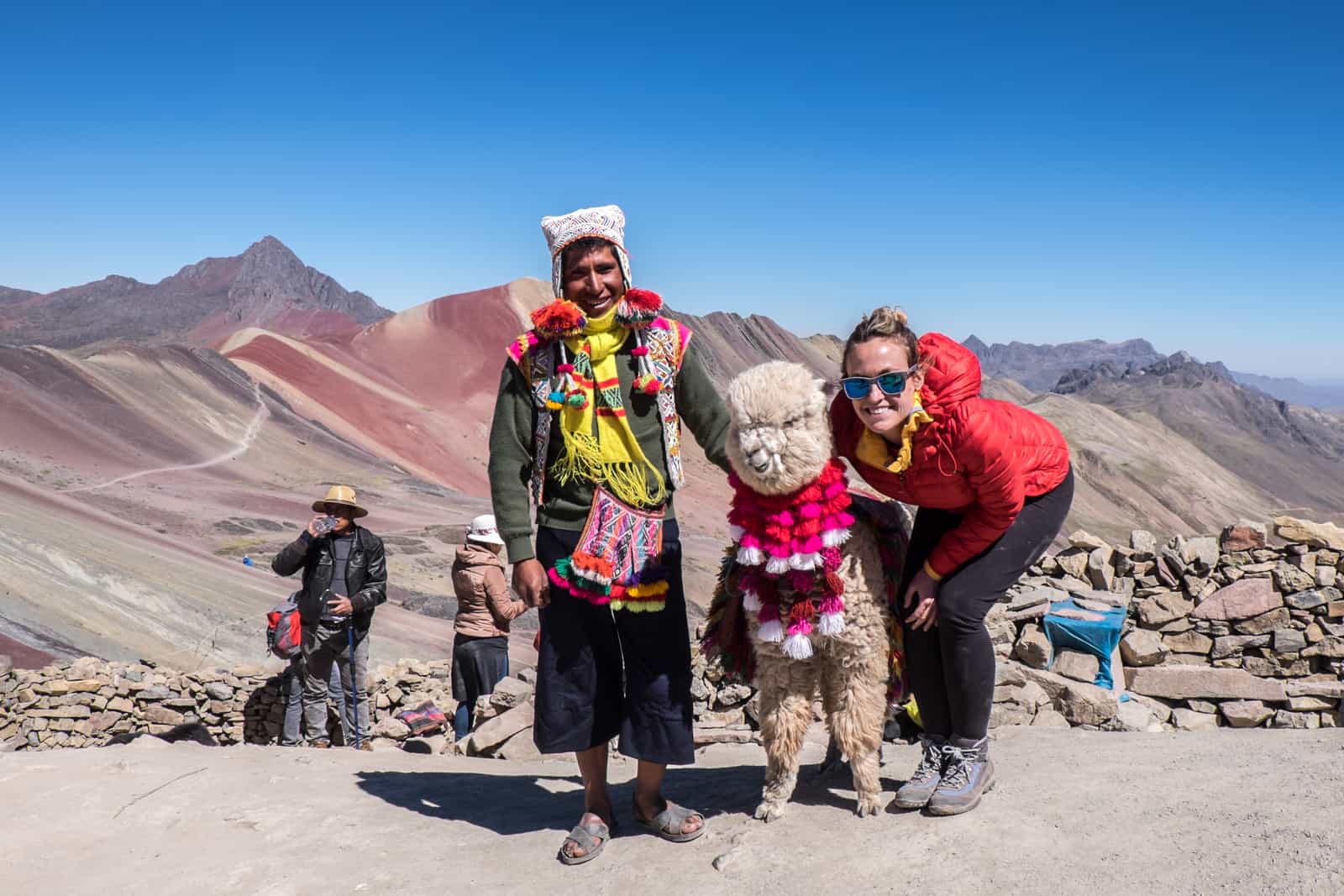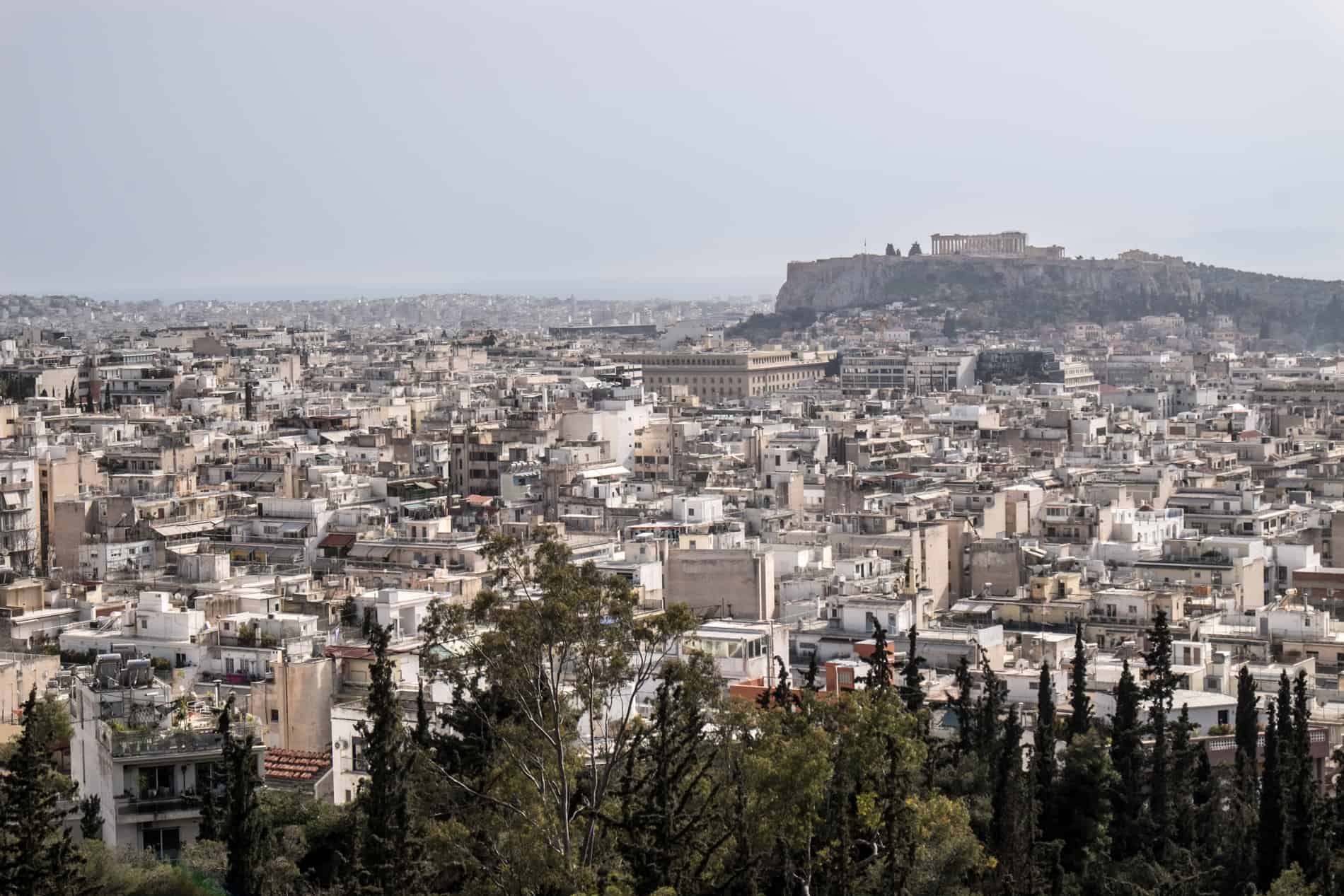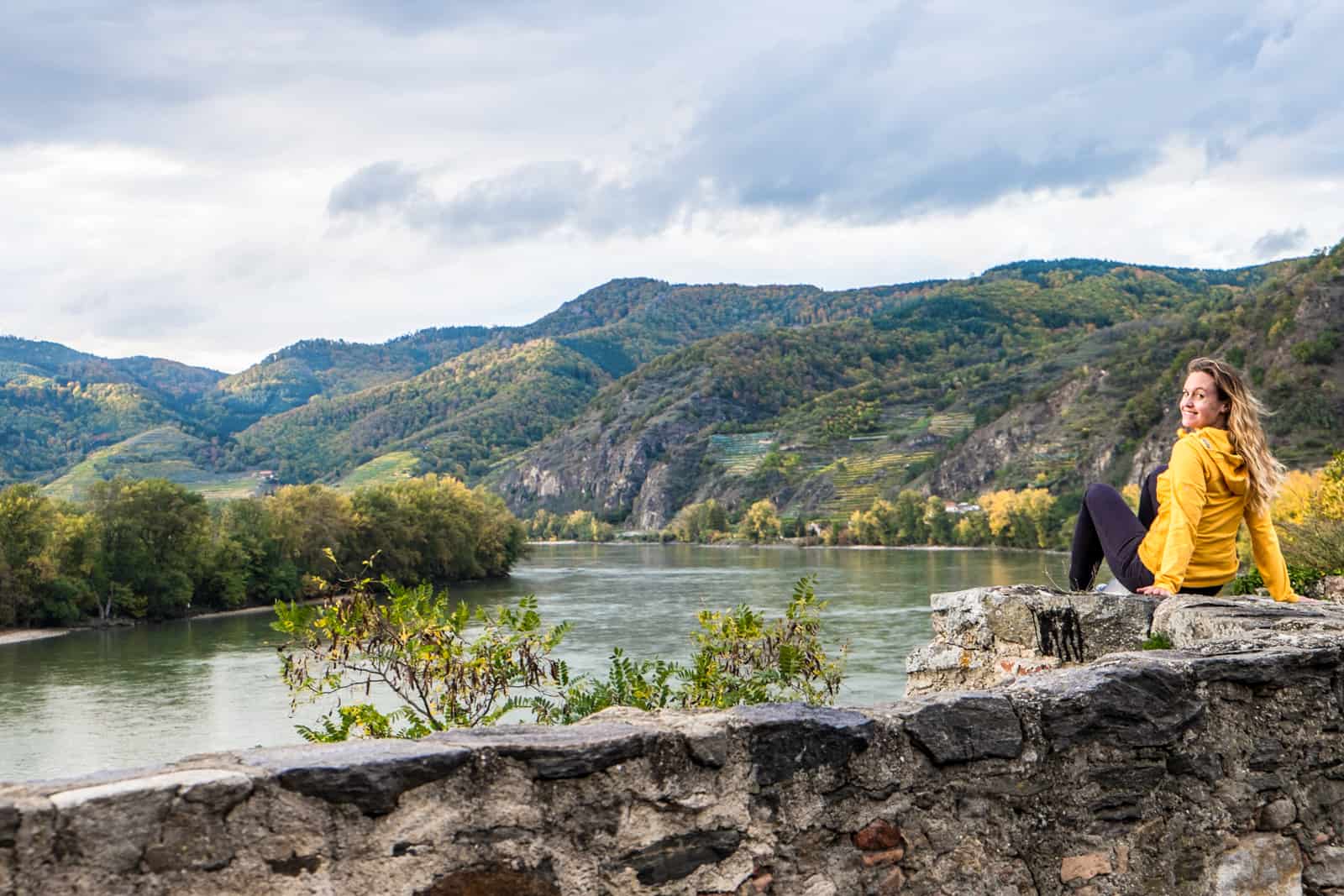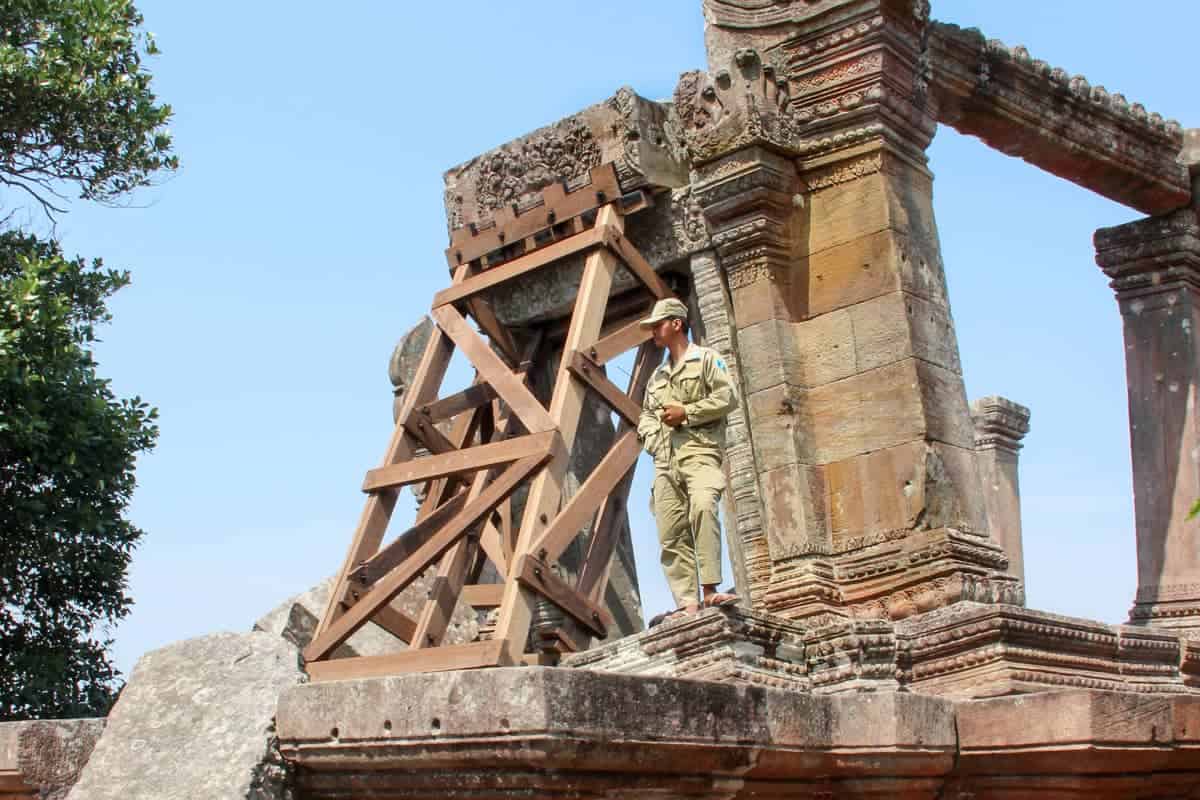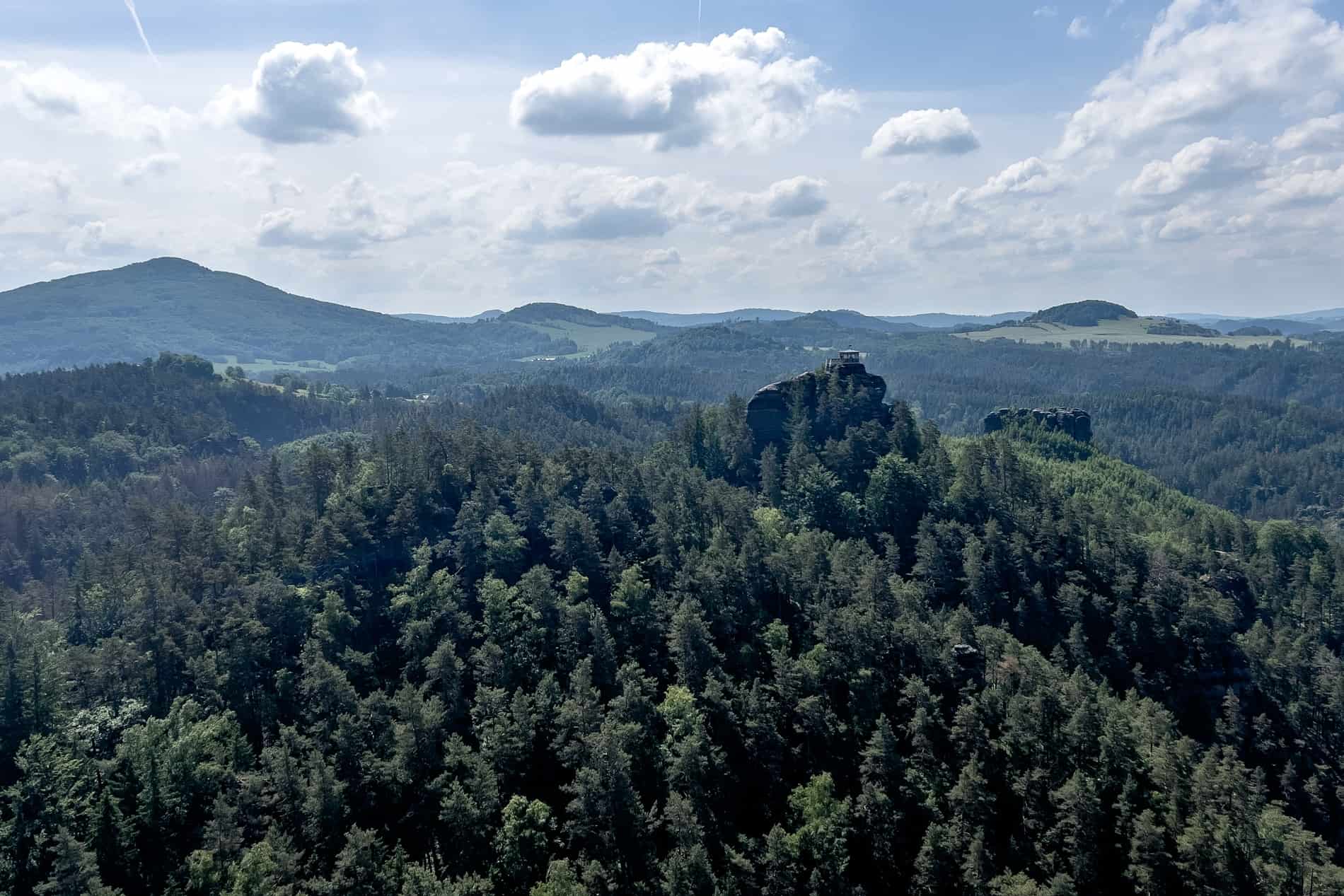The post What to Do in Osaka, Japan – The Rebellious and Eccentric City appeared first on Borders Of Adventure.
Here’s what to do in Osaka, Japan, to see the eccentric city offering in contrast to cutting-edge Tokyo and traditional Kyoto.
While listed as part of the trio of Japan city-hopping destinations, Osaka remains the least visited. So what is Osaka like? If Tokyo is the crazy and cutting-edge city and Kyoto the tempered and traditional, Japan’s third-largest city, Osaka, is the rebellious and edgy one that many overlook or only scratch the surface of.
Osaka holds historical and cultural importance as an ancient capital that grew into a major economic and cultural metropolis. It’s where a 400-year-old Osaka Castle and a scattering of Buddhist temples jostle for space amidst the rising modern skyline, including the landmark Umeda Sky Building. Yet Osaka is more known as a centre for entertainment, from Japan’s Universal Studios theme park to the famed street food and spirited nightlife, especially in the energetic Dotonbori neighbourhood.
Brash, bold, bright and bustling, here are all the things to do in Osaka, what to see, and where to go to discover its uniqueness.
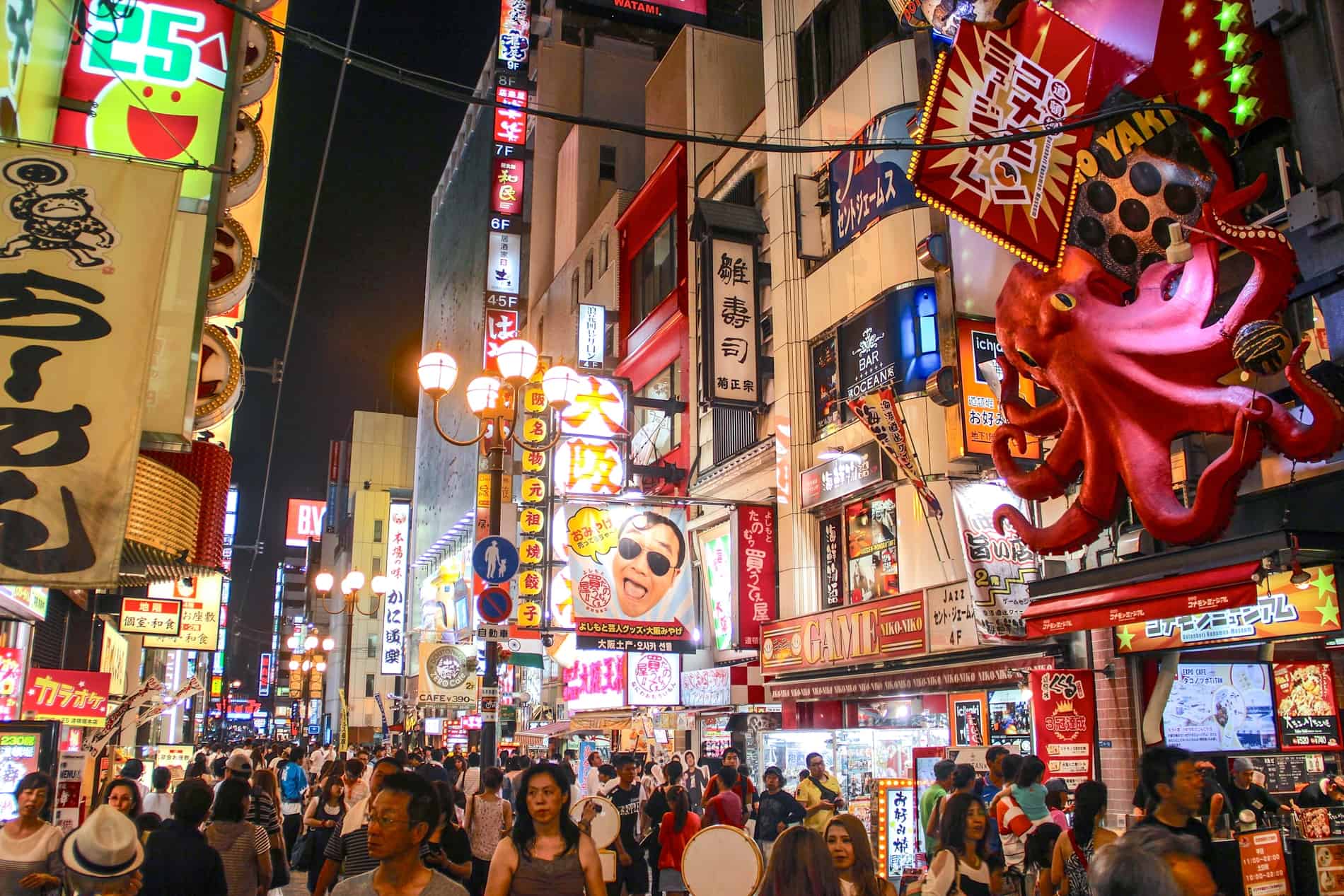
What to Do in Osaka, Japan – The Rebellious and Eccentric City.
Visit Osaka – Things to Know
Where is Osaka in Japan?
The bay-set port city of Osaka is located in western Japan, on Honshu (the largest of Japan’s four main islands). The city is the capital of the Osaka Prefecture in the Kansai region.
How to get to Osaka
Osaka has two main airports – Kansai International Airport (KIX) and Osaka International Airport (ITM), serving domestic and international flights. Osaka may even be your first stop instead of Tokyo if you fly to Japan.
If you travel from another city in Japan, the easiest way to get to Osaka is by the Shinkansen bullet train. Tokyo Station to Osaka Station takes only 2 hours and 30 minutes.
Japan Rail Pass – From Ł185 / €210 / $229 / Multiple Currencies
Available from Japan travel experts, J Rail Pass – multi-day and regional passes can be ordered with free delivery in various countries. Buy Now.
Buses are cheaper, but the journey is around 8 hours long.
Domestic ferry routes operate from Osaka Nanko (South Port) with connections to neighbouring South Korea.
How many days to spend in Osaka
Give yourself at least three days in Osaka to explore, especially with full evenings factored in since this is when the city comes alive, and the Dotonbori district is a standalone destination. By day, wander the city with districts likened to London’s Camden or San Francisco’s Haight Street, sandwiched between underground malls and observation deck skyscrapers and juxtaposed by historical relics. Factor in an extra day if you plan to visit Universal Studios Japan.
Where to stay in Osaka
In Shinsaibashi
Hotels in Shinsaibashi can be pricey, but a few mid-range hotels like Hotel Code Shinsaibashi and Miyako City Osaka Hommachi offer a no-thrills but stylish space for comfort and convenience. All the amenities you need and less than a 10-minute walk from the city highlights and nightlife.
IMANO Osaka Shinsaibashi Hostel is a modern budget hostel with its own cafe and bar. In the heart of the action and close to subway stations to get around.
Outside the Centre
J-Hoppers Osaka is a budget hostel with dorms and private rooms. It’s based outside the centre in the nearby Konohana ward, on the peninsula where Universal Studios is based), but with great city transport links.
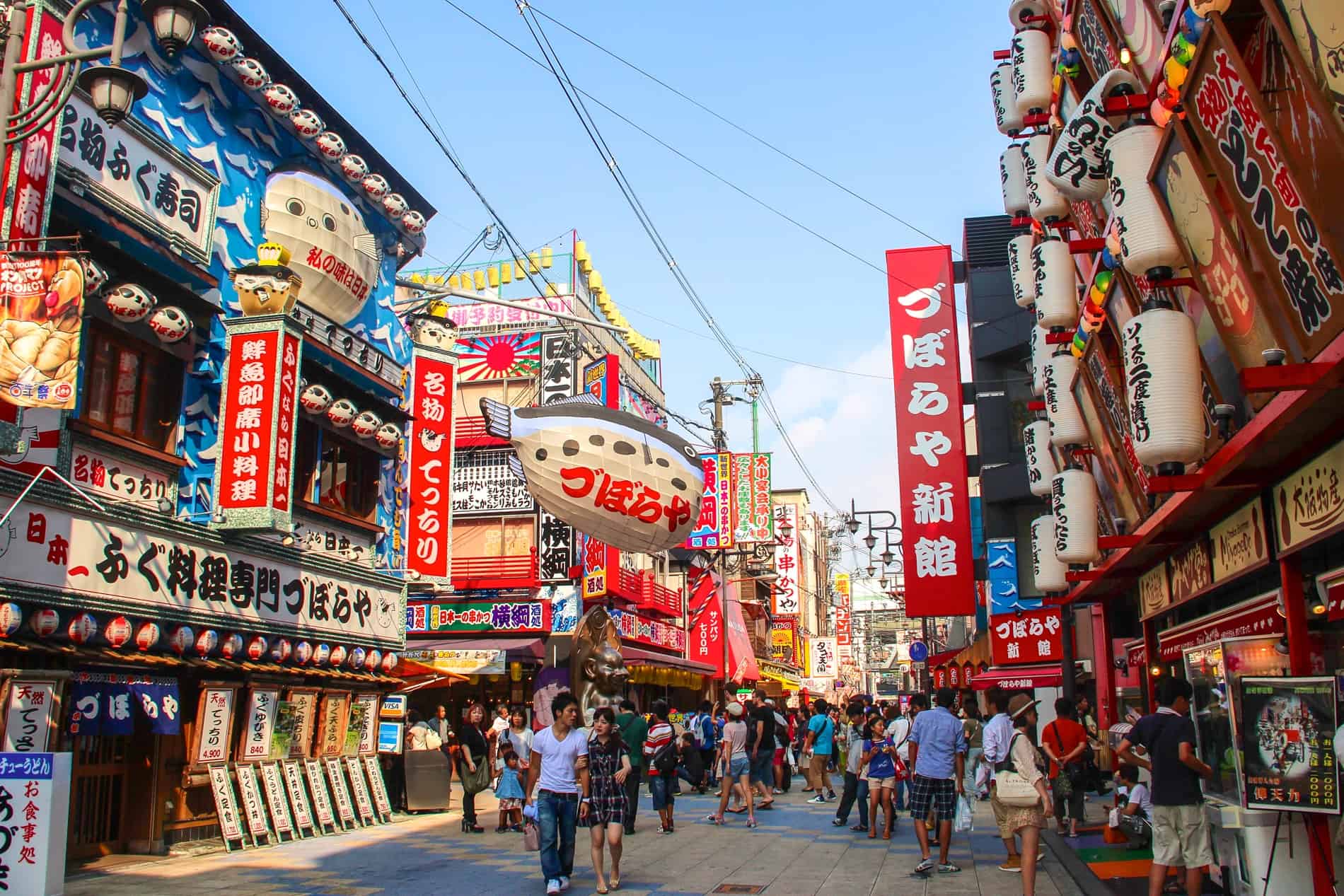
Osaka’s Shinsekai area by Day.
What to Do in Osaka
Famed for its nighttime buzz, Osaka sightseeing by day is just as interesting – a mix of districts, each with a distinct character.
Downtown Osaka – Minami (Namba)
Start in this cluster of compact, culture-filled areas in the south of the city, often considered Osaka’s downtown.
Hang Out in Funky Amerika-mura
I stayed in Amerika-mura (also known as ‘American Village’) in the central Minami district – a place where the kids of cool come to hang out. Modern western fixtures mix with Japanese fashion and pop culture, creating a generation of urban street-cred locals who surpass the calm cool of Tokyoites.
Cheap eats, bold fashions, must-have mobile accessories, and arty stick-figure style street lights protrude from every corner, surrounded by a multitude of booming pop tunes, anime stores and arcades.
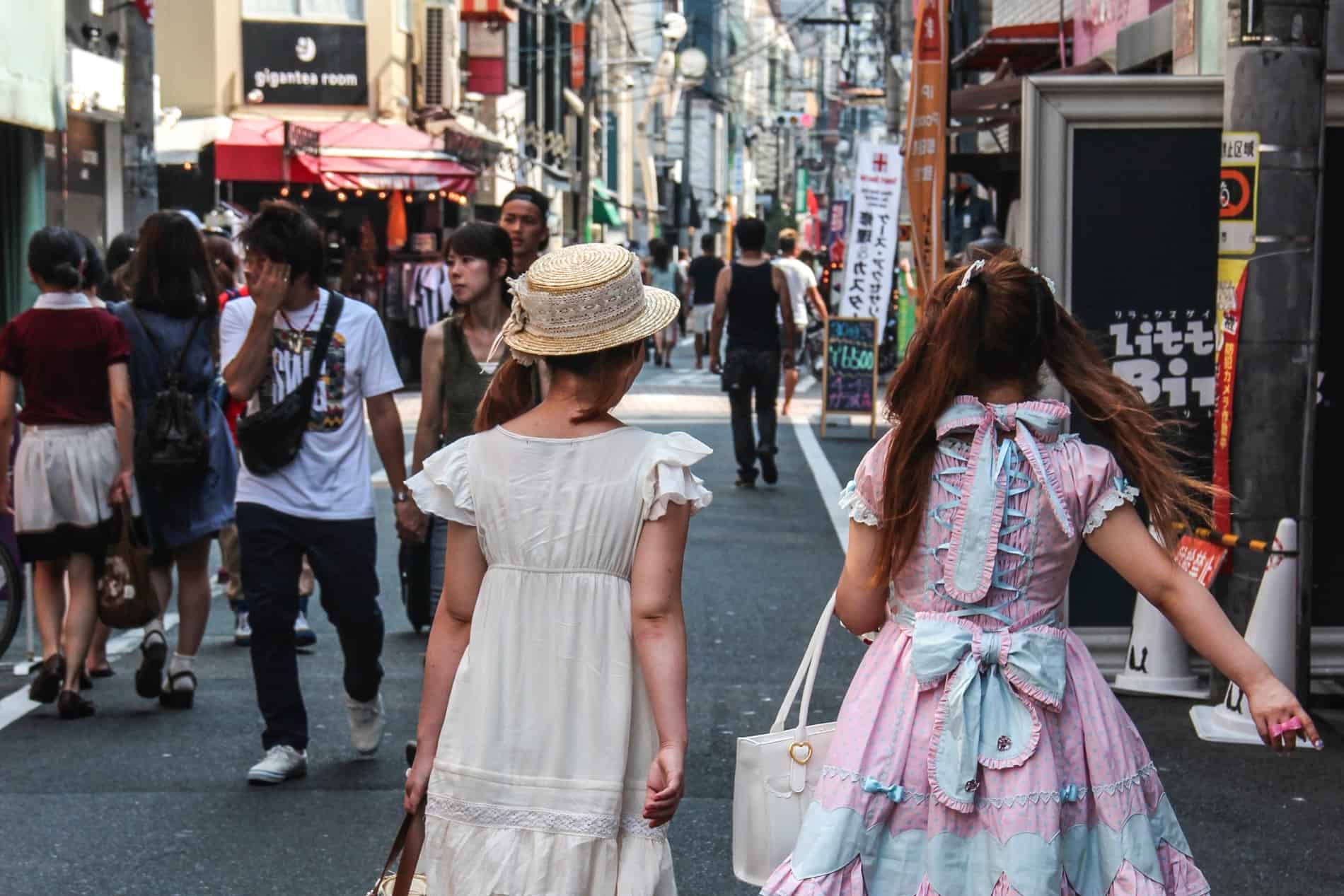
The cool Amerikamura ‘American Village’ in the central Minami district of Osaka.
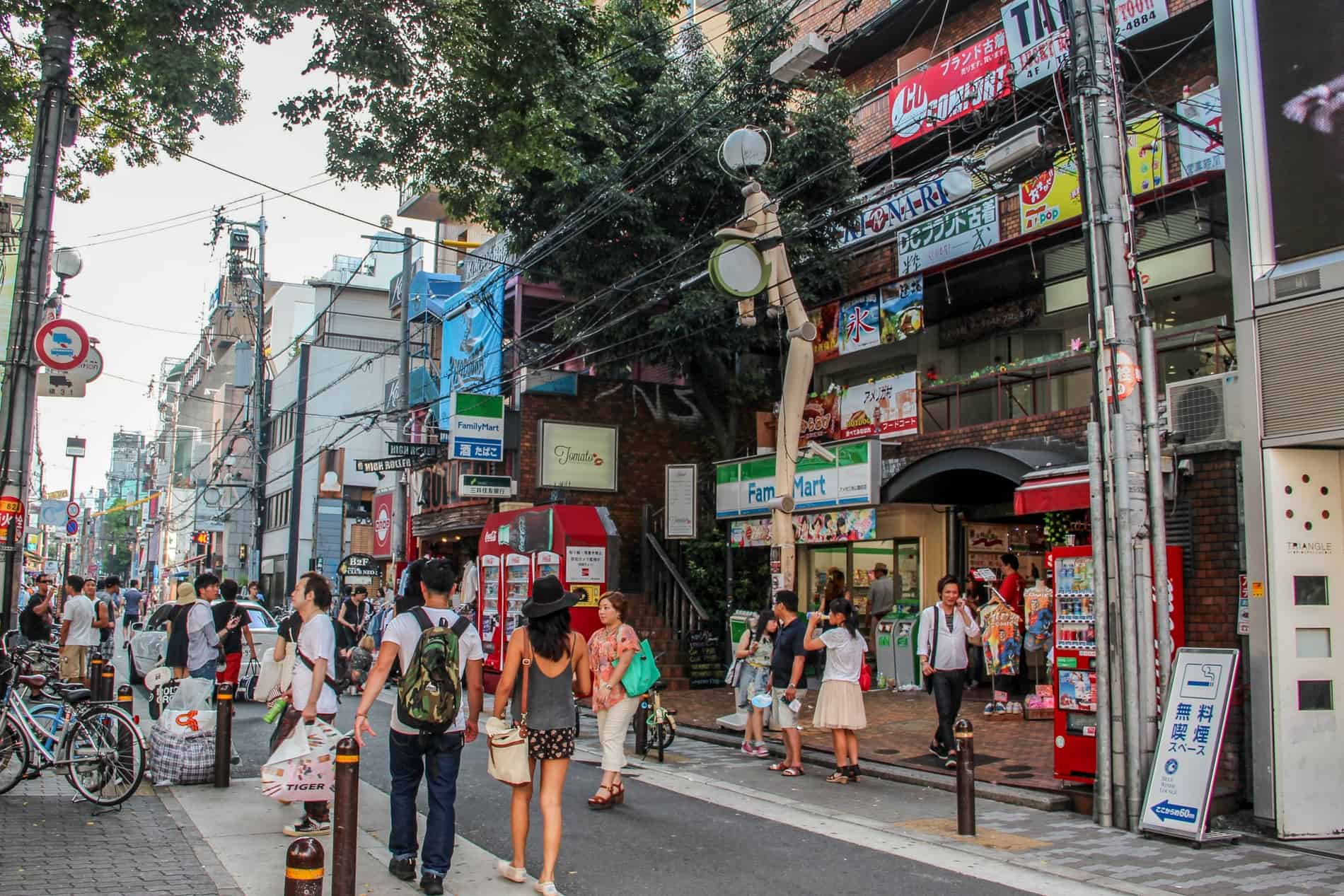
Funky stores and music venues in Amerikamura.
Stroll the Streets of Shinsaibashi and Nishi Districts
For those looking for something more upmarket in Osaka and away from the huge shopping arcade of Shinsaibashi Suji, a five-minute walk west of Amerikamura will bring you to Tachibana-touri, also known as ‘Orange Street’ – originally an Edo Period furniture street store, but now lined with beautiful cafes and boutique stores, and locals with adorable, accessory clad puppies.
I enjoyed strolling around these areas and people-watching, ignoring the large chain stores and stumbling upon tucked-away corners and quirky outlets.
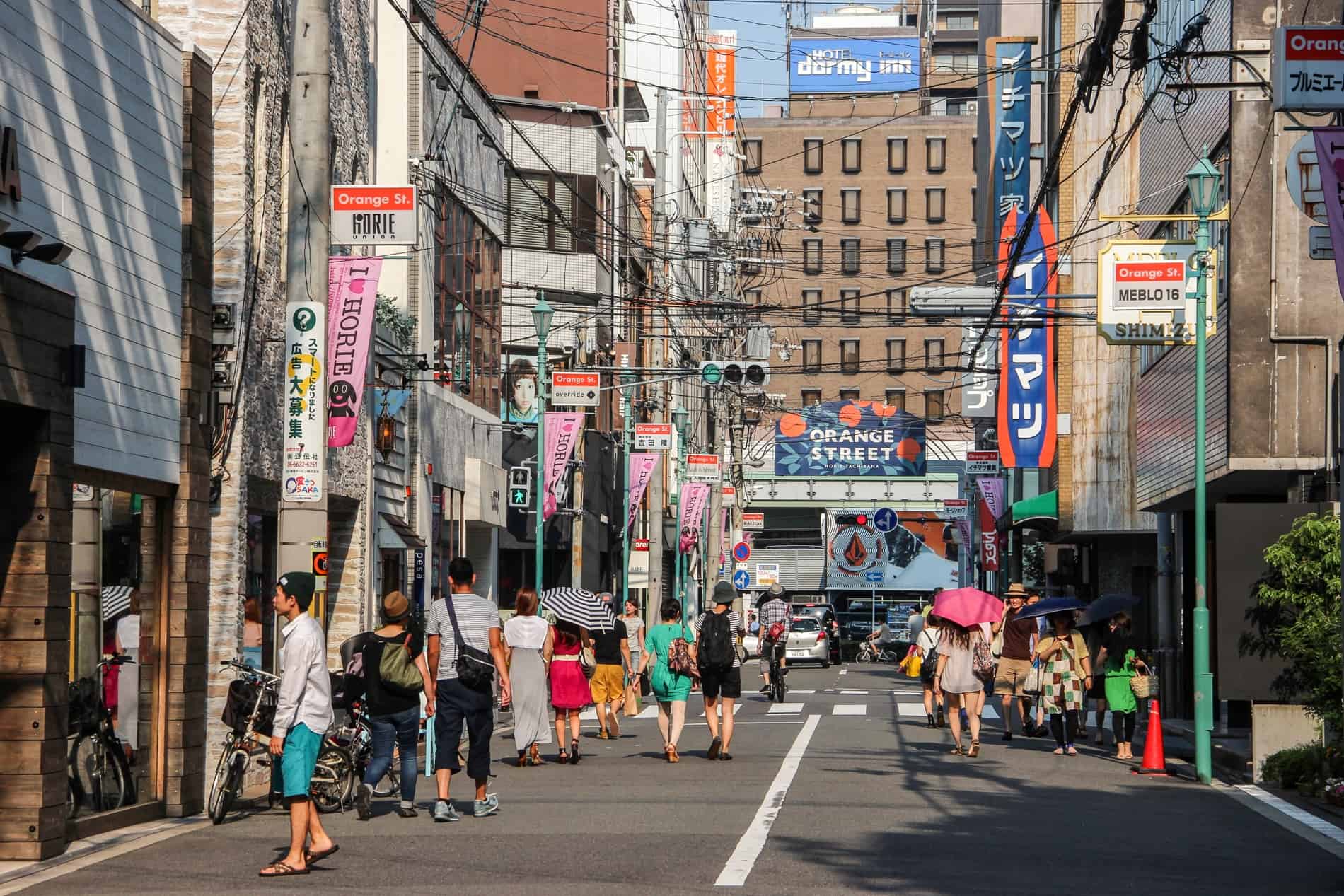
The historic shop-lined Orange Street in Osaka.
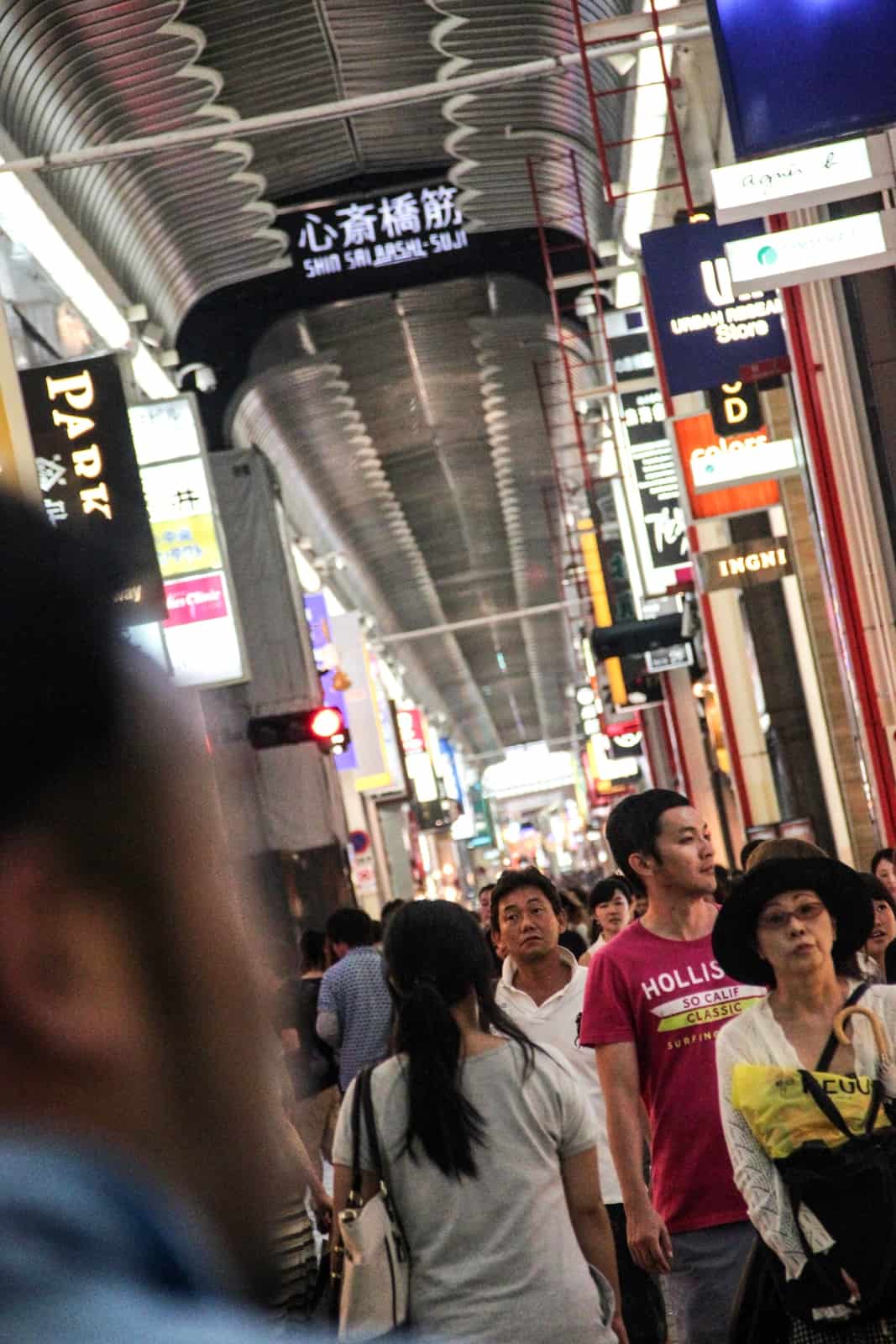
The long shopping arcade of Shinsaibashi Suji in Osaka – these narrow commercial streets define Osaka.
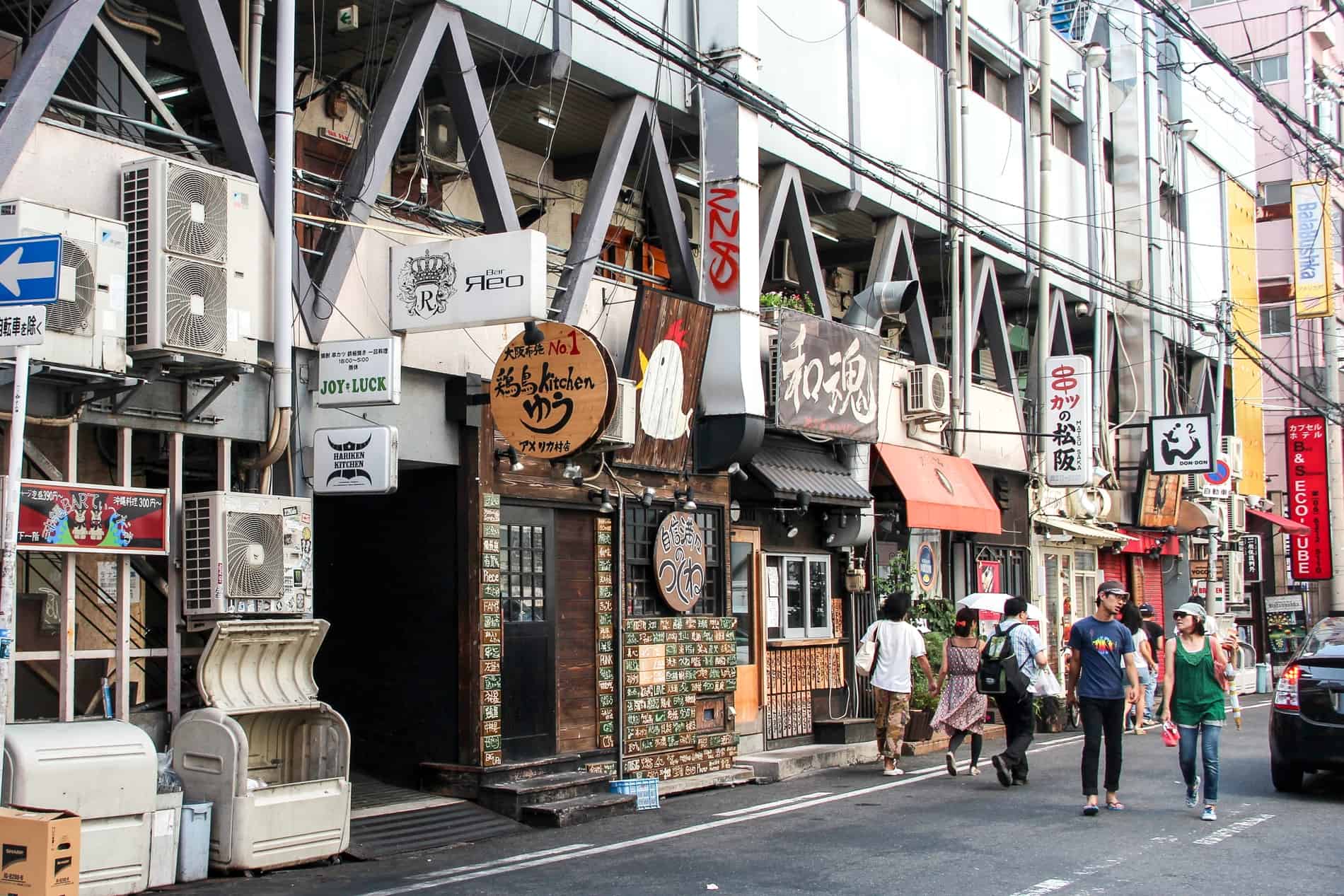
A street of restaurants in Shinsaibashi, Osaka.
See Shinsekai and the Tsutenkaku Tower
My other great find was Shinsekai, a more concentrated version of Dotonbori, with its chromatic streets lined with Kushikatsu restaurants (various battered and deep-fried foods – one of Osaka’s many culinary specialities) and dominated by the looming silver and rocket-like 1950s Tsutenkaku Tower.
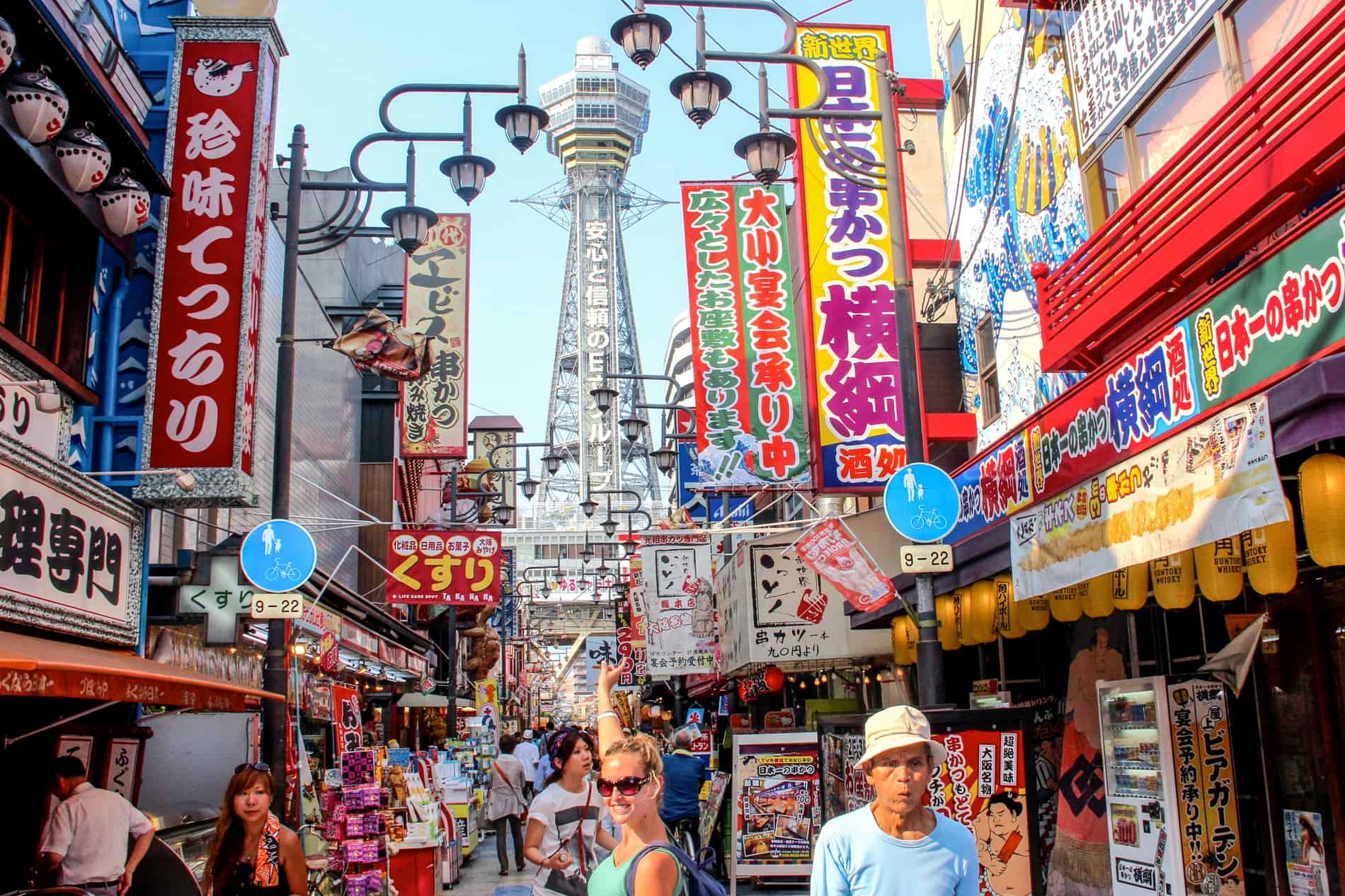
The chromatic Shinsekai with a view to the Tsutenkaku Tower.
Arcades and Street Life by Day
Osaka’s entertainment district of Dotonburi isn’t empty during the day when the crowds are less, the street food vendors still serve their famed treats, and the shopping arcades are just as buzzing. Like the main city vein of Ebisubashi-suji shopping street, which started life as a shopping area in the Edo period close to the Ebisu shrine. Today it connects to the Ebisubashi Bridge by the Glico sign.
Around five blocks south of Dotonburi’s main strip and near Namba Metro station is Cafe Street – a short strip of cafes serving everything from tea and cakes to pancakes and ice cream. The record cafe, Graffiti provides retro vibes.
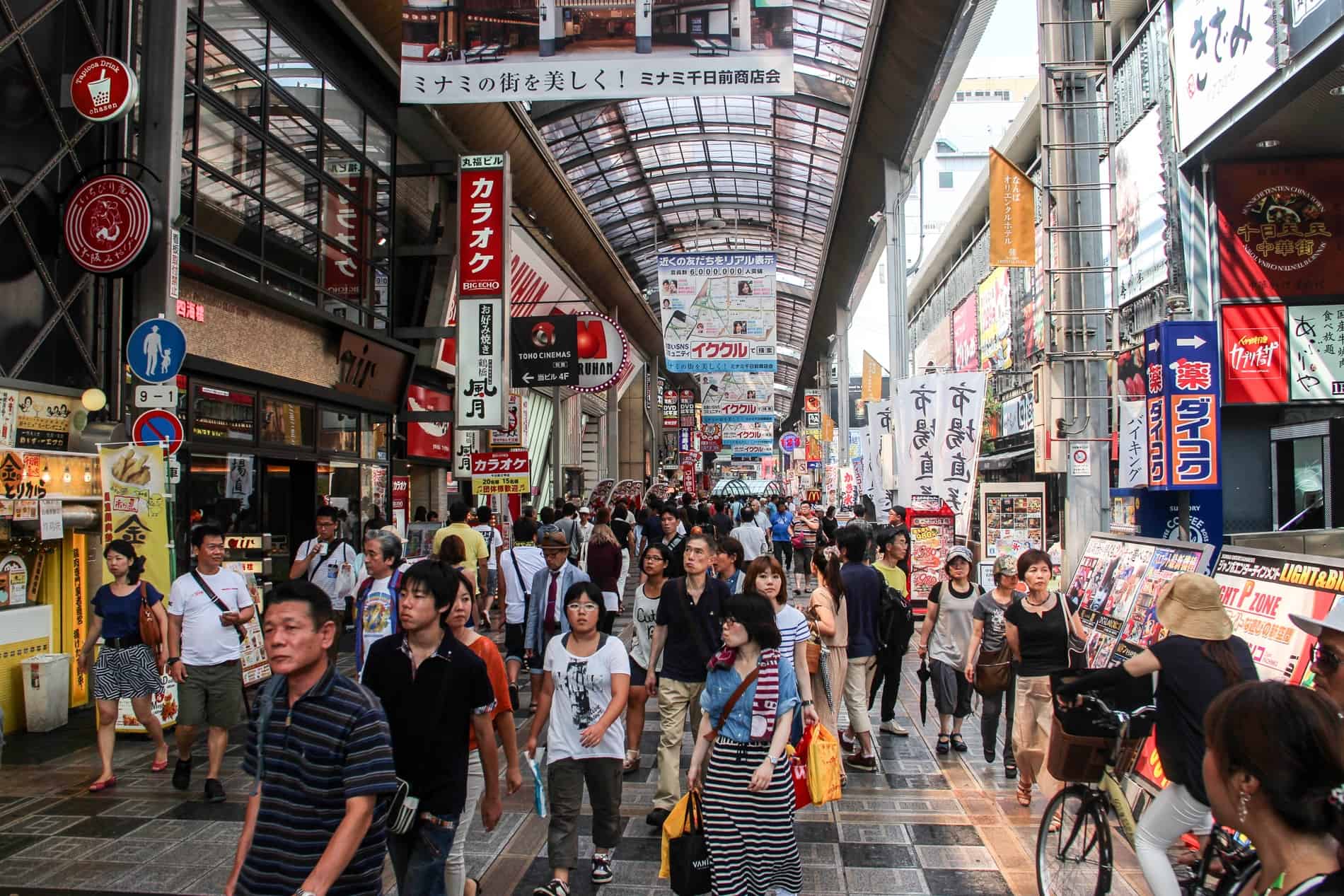
Ebisu Bashi Suji Shopping Street, Osaka
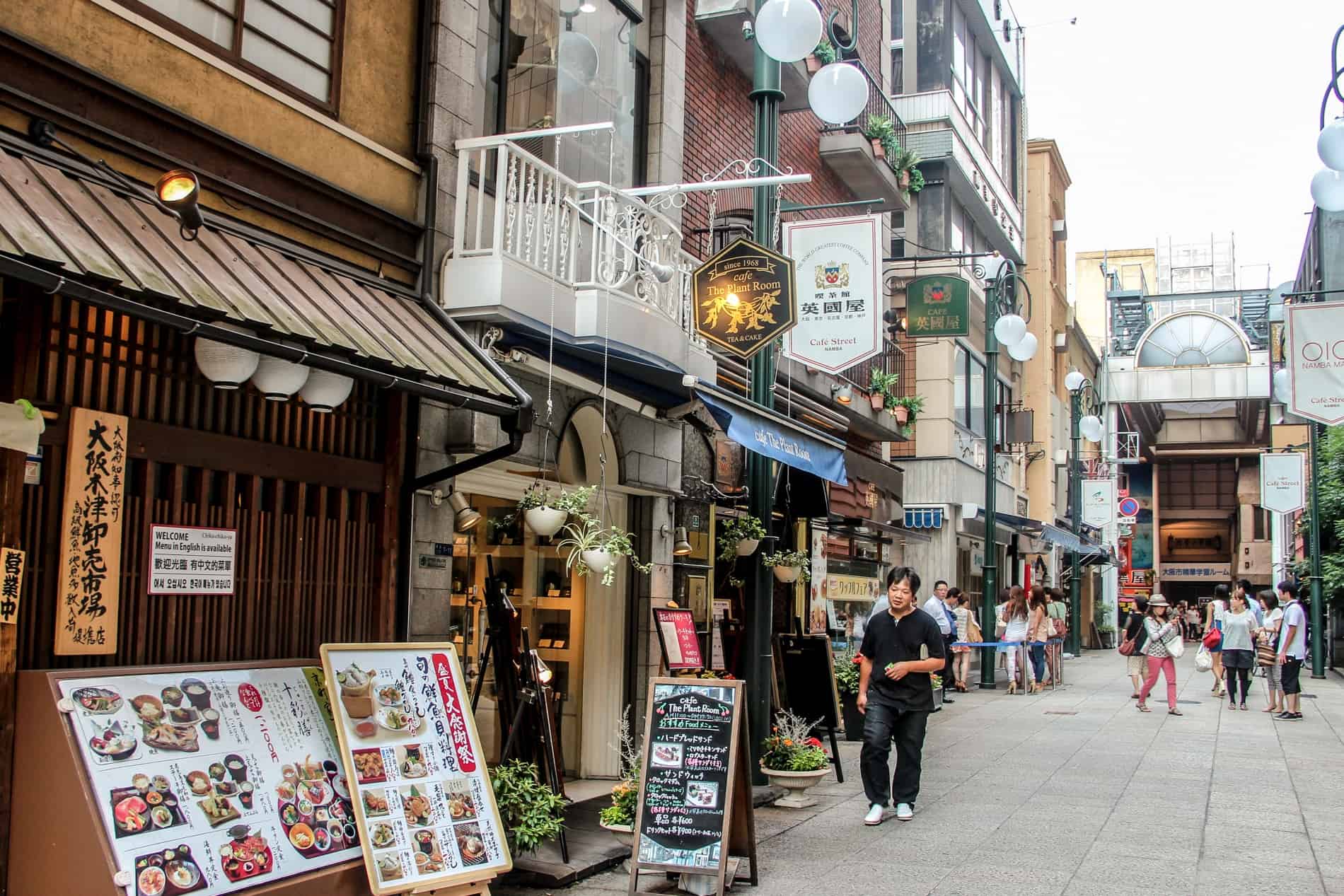
Cafe Street near Namba Metro station.
Eat your way through Kuromon Ichiba Market
A street food arcade, Kuromon Ichiba Market is Minami’s longest kitchen – a tunnel of vendors known mostly for fresh fish, but also the place where you can pick up fruit, vegetables, and other local produce. Grab a bite of everything from seafood, sushi, and other Osaka delicacies as you make your way through the 600-meter-long covered market.
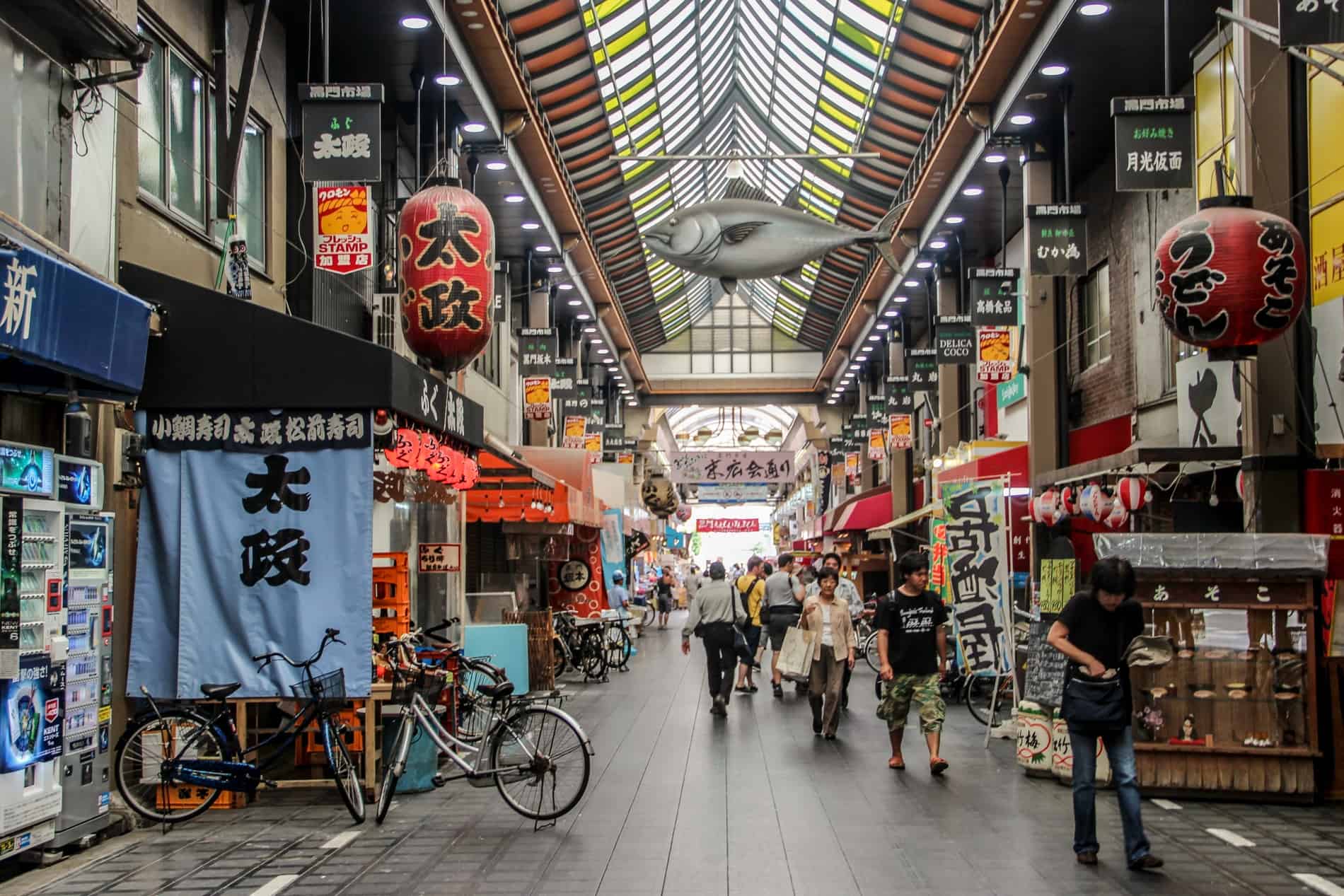
Kuromon Ichiba Market is food heaven.
Step Back to Old Osaka in Hozenji Yokocho
The narrow street of Hozenji Yokocho, with its connected side alleys, leads to the tucked-away Buddhist Hozenji Temple. This area is a microcosm of old Osaka next to the bold Dotonburi, where you’ll find traditional wood and stone architectural features and cobblestoned streets.
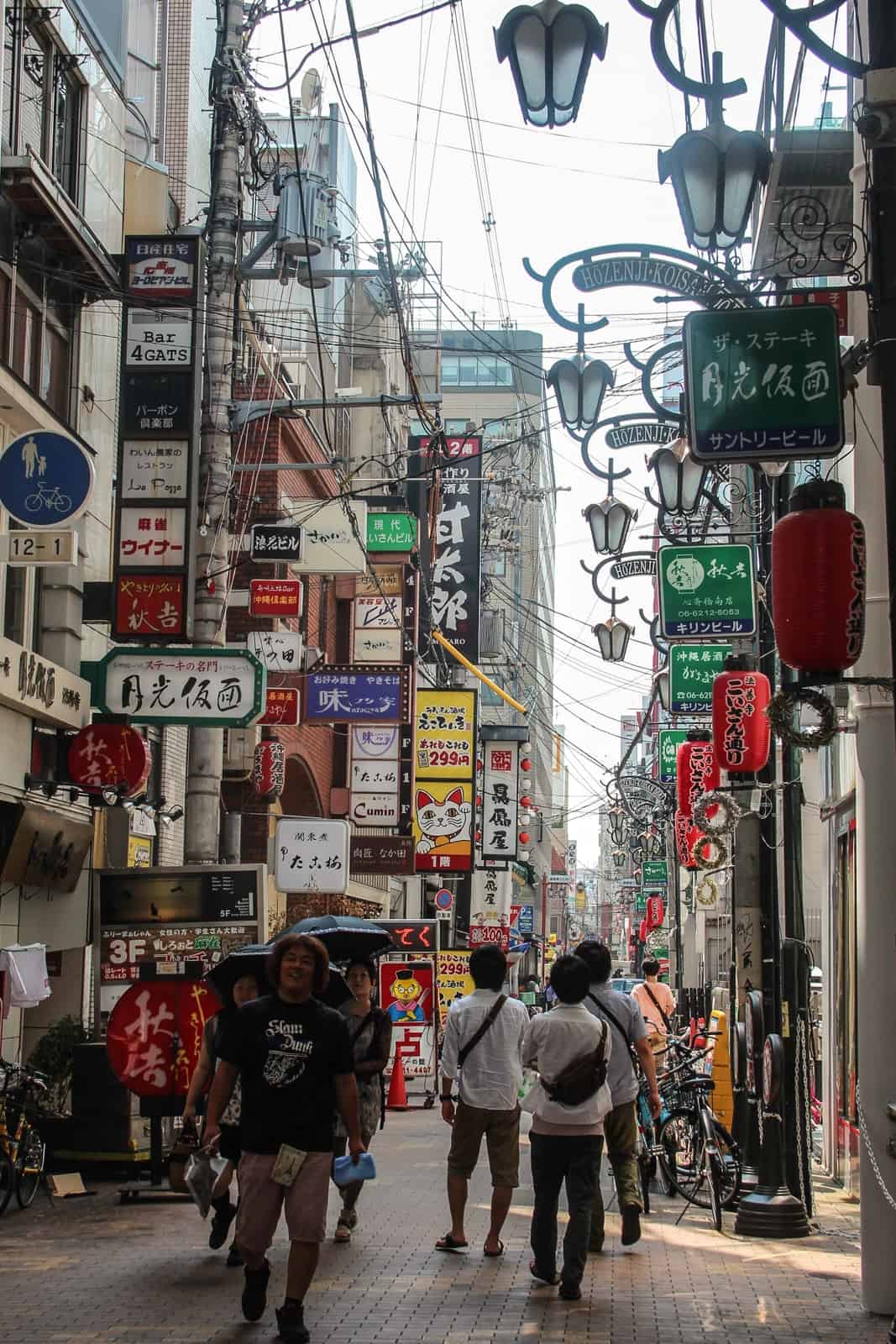
Hozenji Koisan Street, Osaka.
See Osaka at Night – Dotonburi at Sundown
Osaka evenings are when the city comes alive. And it’s all centered around one area – the famed D?tonburi area. Minami is home to the Dotonburi shopping and entertainment district. Once you cross south over the D?tonburi Bridge, you will hit an area that pulsates with hundreds of neon lights, mechanical sea creatures, and hungry people looking for the next foodie fix.
One of the first things you will see when crossing the bridge, and between the huge H&M, Starbucks, and TV screens, is the famous Glico Running Man sign, amongst other advertising, illuminating a small space for an excited crowd.
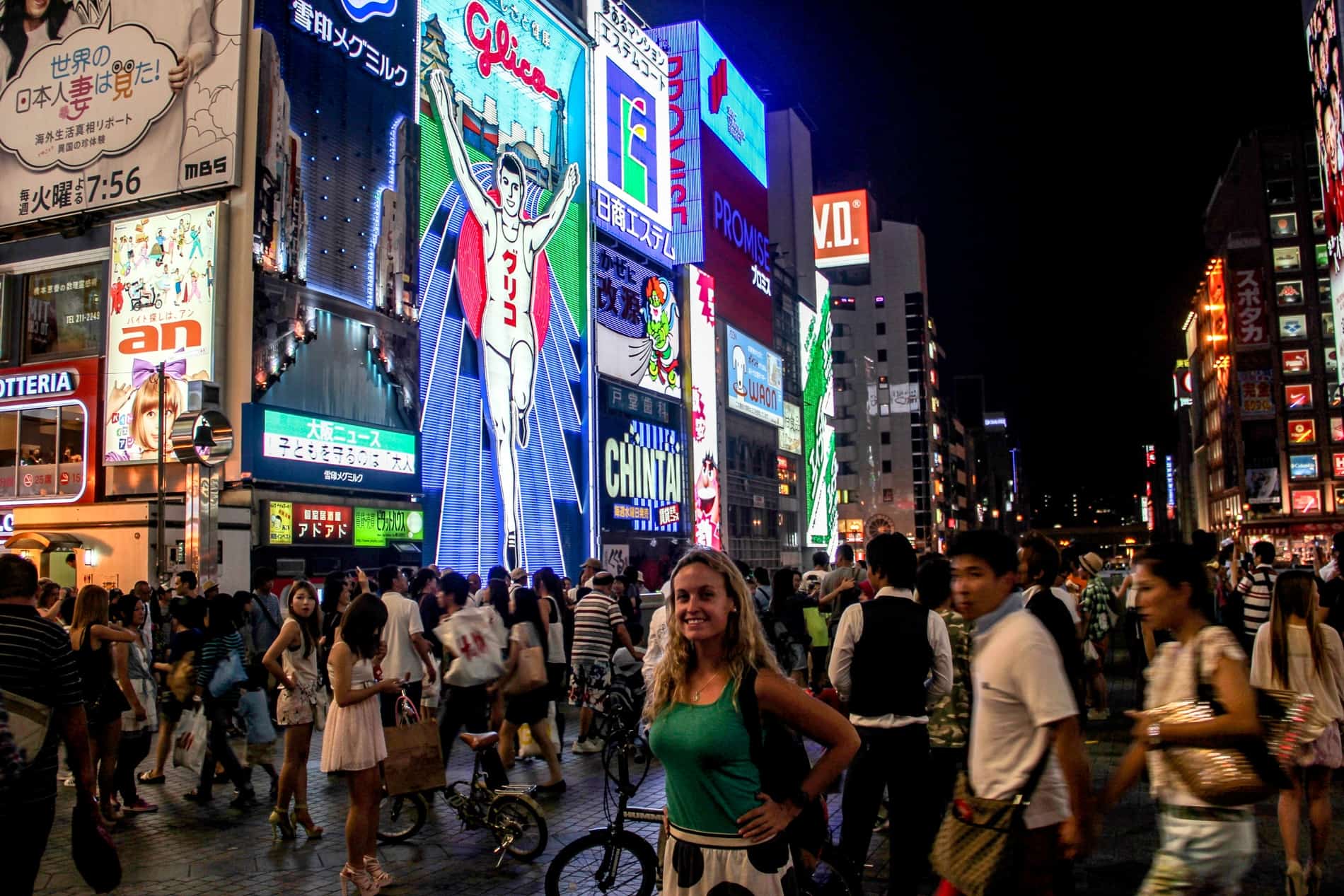
One of the famed things to do in Osaka is to see the famous Glico Running Man sign.
Right around the corner sits the giant Kani Doraku crab sign, which marks the start of a long street full of quirky and comedic advertising alongside many a giant octopus, crab and pufferfish, marking restaurants of that particular speciality. Why? One of the best things to do in Osaka is to eat!
Osaka’s street food culture was recently showcased on the Netflix ‘Street Food’ documentary series, detailing the family-run businesses and famed chefs behind local dishes, including the pancake okonomiyaki and dough ball takoyaki.
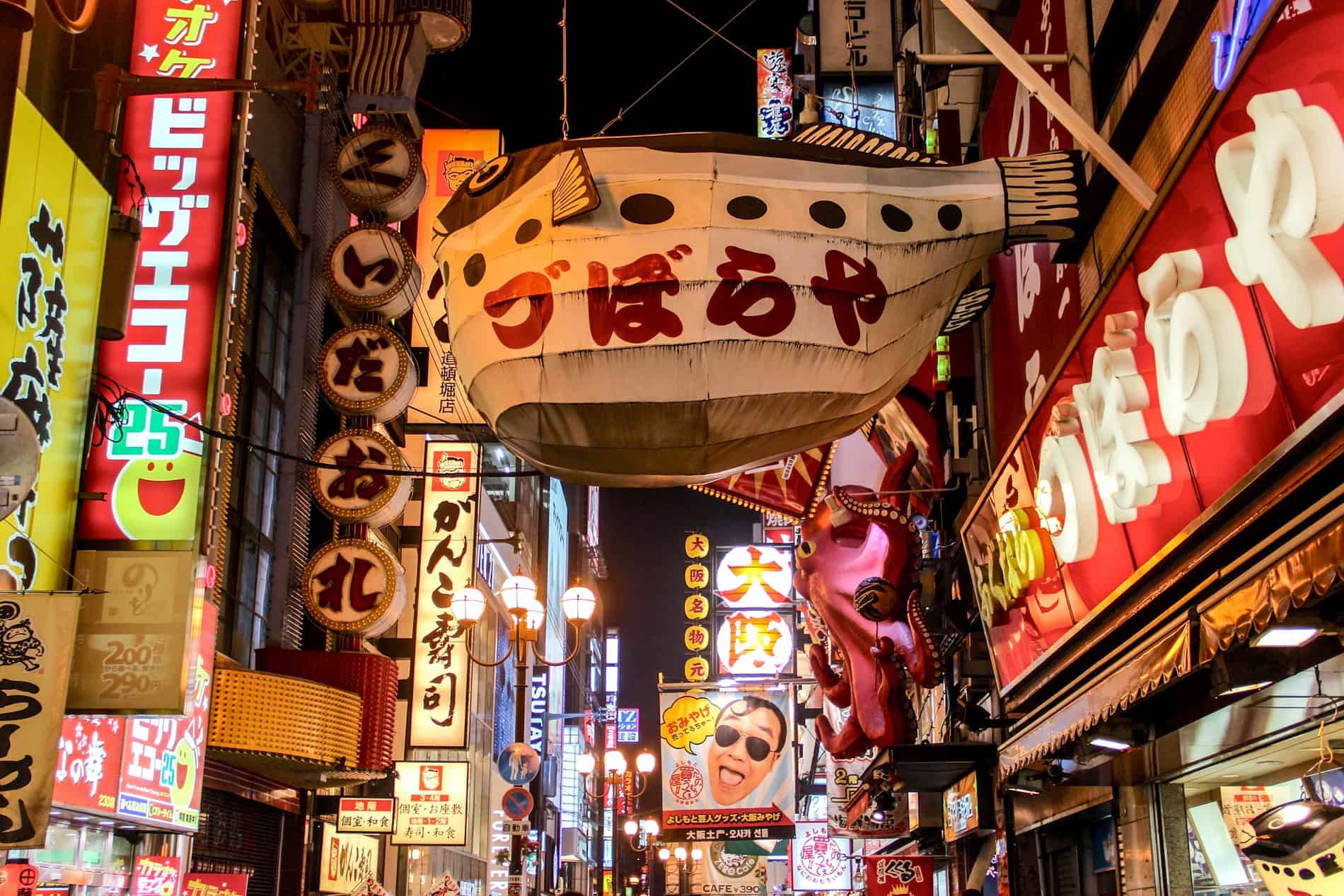
The multi-layered signage of Dotonburi at night.
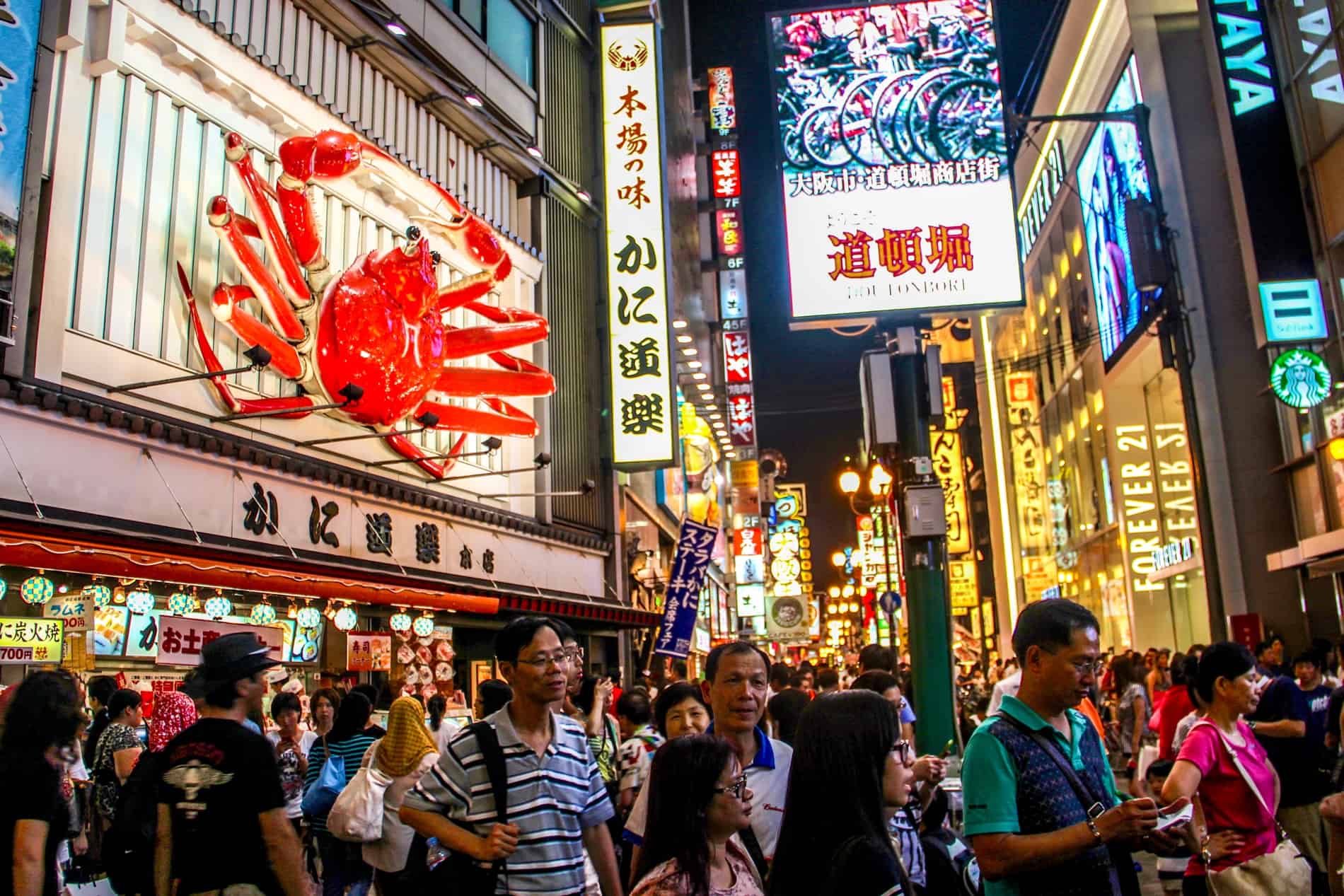
The giant red crab above a food outlet in Dotonburi, Osaka.
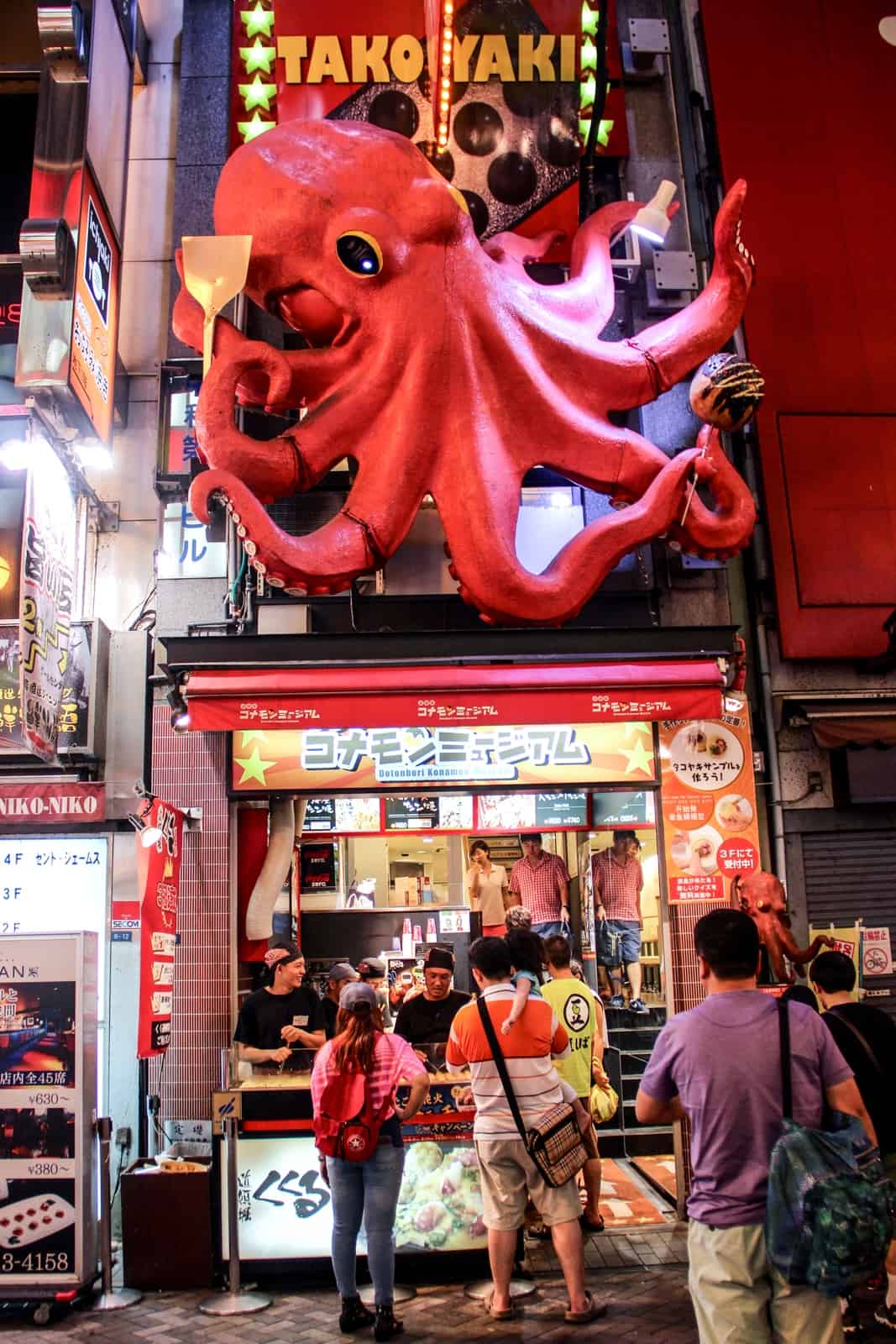
A giant pink octopus marks a street food stall in Osaka.
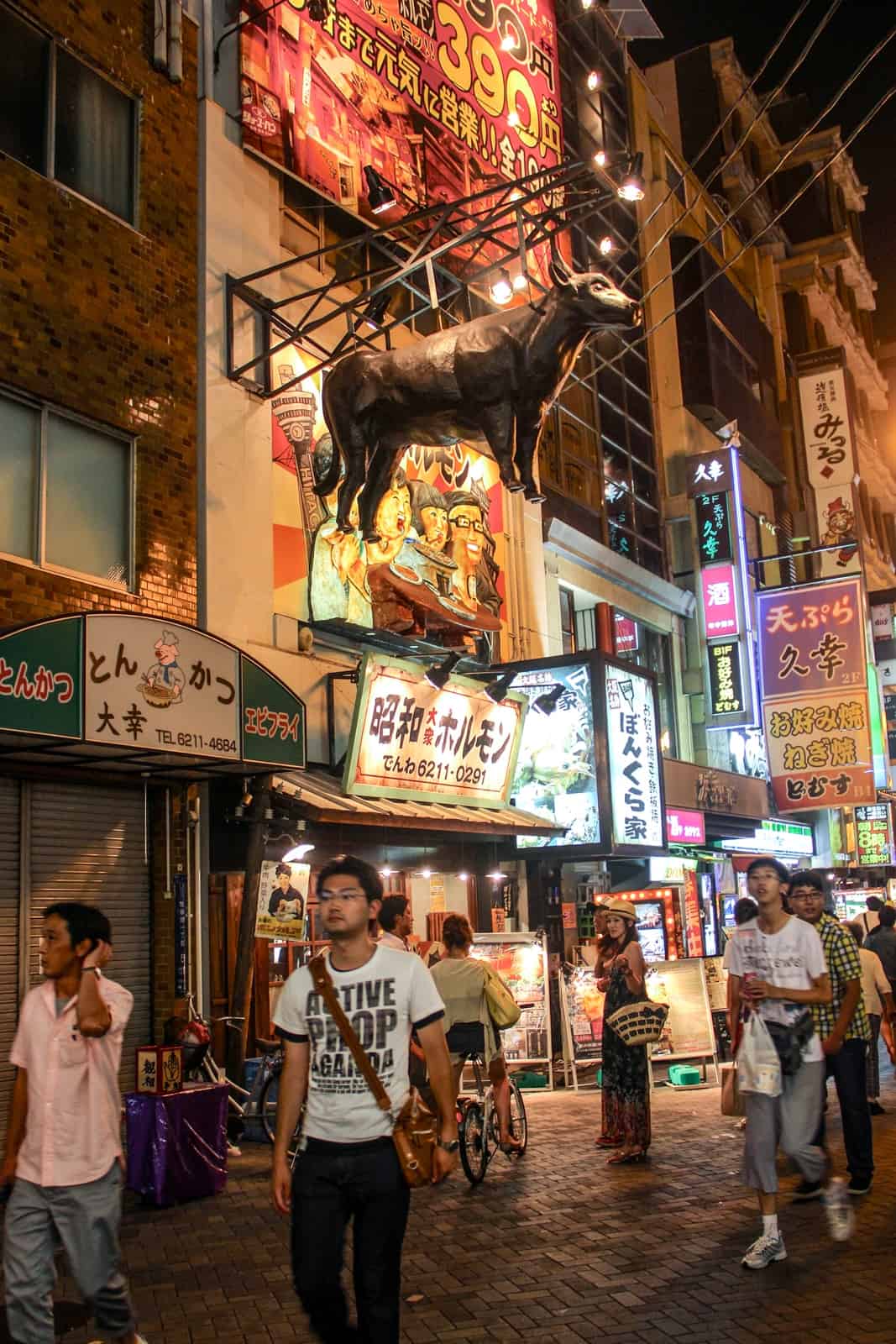
A model of a bull hangs outside another Osaka street food outlet.
This area is only best seen at night. The red and orange hues of the streets, combined with the bustling crowds, were not something I found elsewhere in Japan – whilst Tokyo has its own vibrant night light districts of Shinjuku and Shibuya, Osaka’s attractions are more unique and flamboyant. To miss this district of Osaka would mean missing out on the more edgy character of the city.
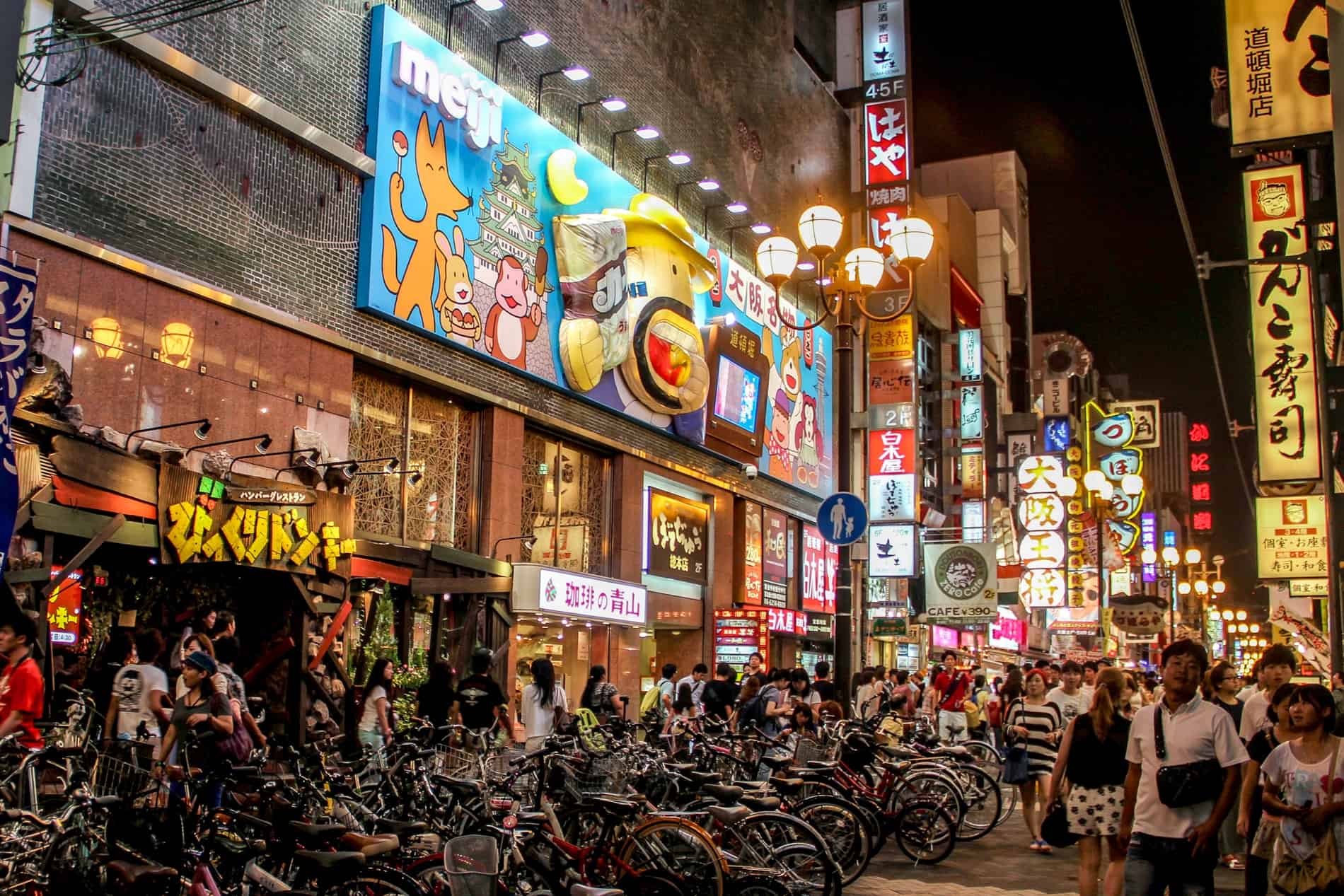
Osaka’s Dotonburi district comes alive at night.
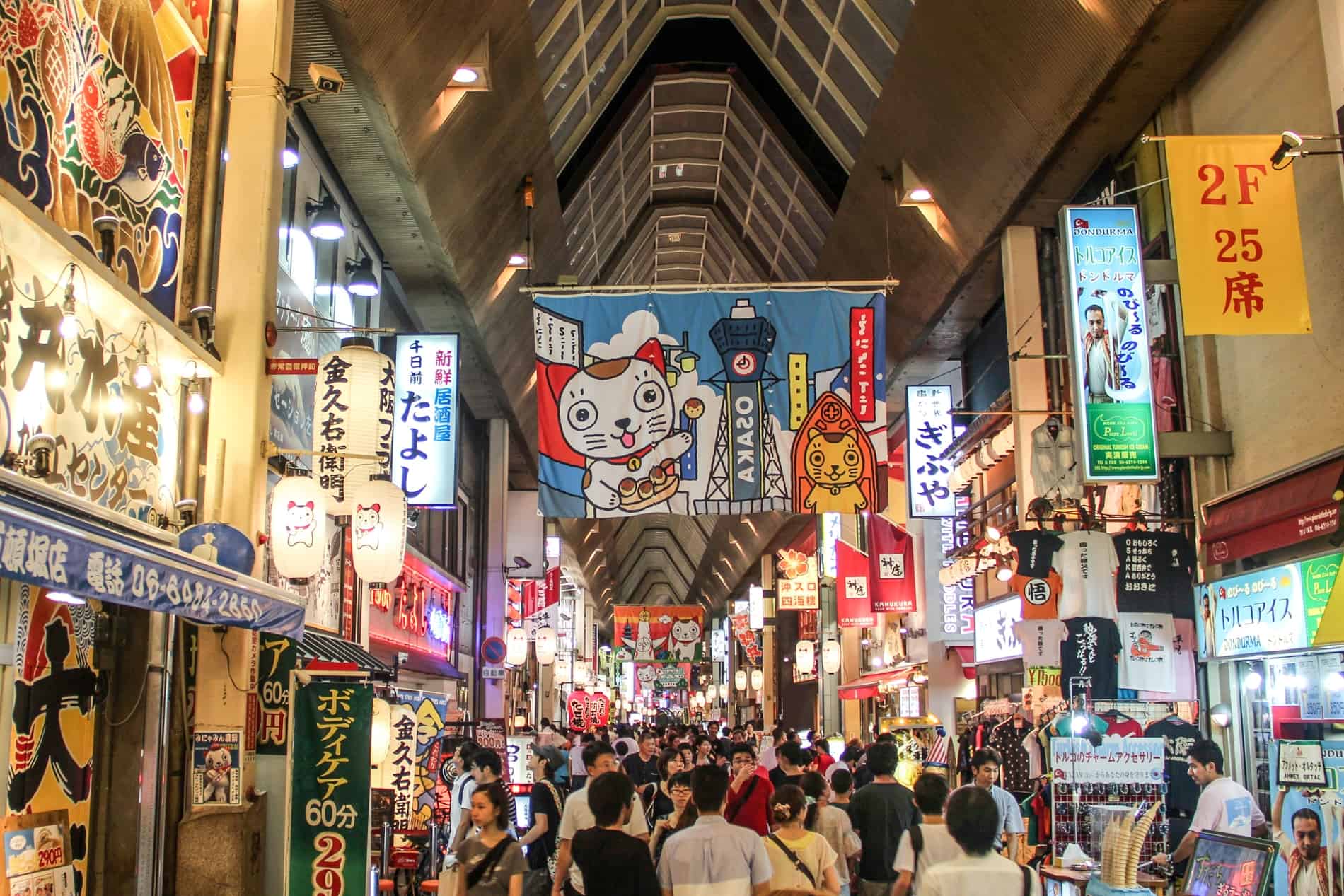
The Shopping arcade on Dotonburi Street, Osaka.
Take the Tombori River Walk
A canal-side district, it’s a great area to escape to for a more scenic side of the city. For those seeking a calmer spot to recuperate from the bright onslaught of the frenzy of streets, the D?tonburi canal runs parallel, where lanterns line the water, unruffled by the glare of giant underwater critters.
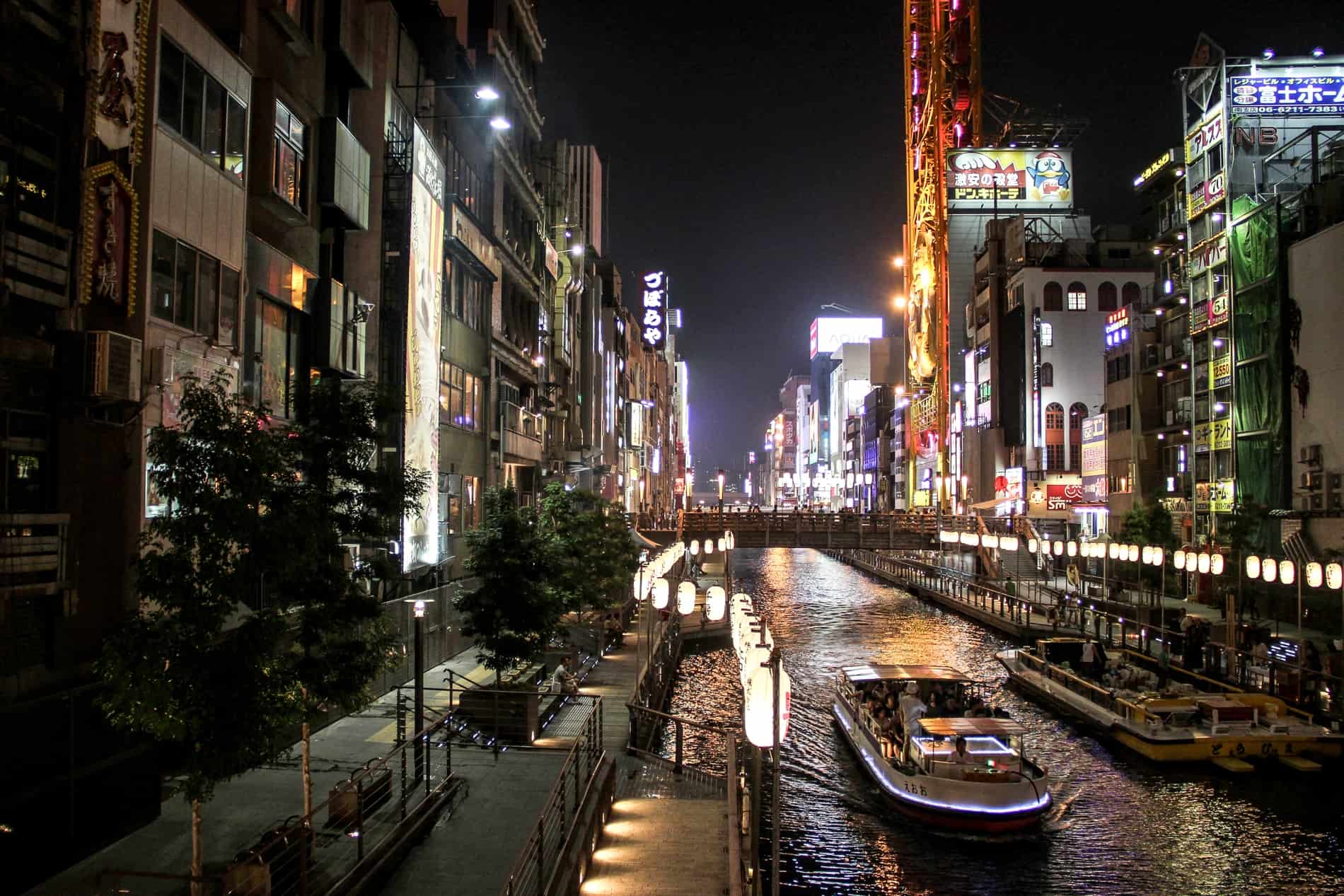
What to do in Osaka? Take the iconic Tombori River walk.
Northern Osaka – Umeda (Kita)
The area of Umeda in Osaka (also known as Kita) is full of skyscrapers, shopping malls, and department stores. You might not be too keen to spend much time here – this soon gets tiresome after many days in Tokyo – but it’s where you will find one of the wider elevated views of Osaka city.
Ride the HEP FIVE Ferris Wheel
After a few minutes walk from Umeda’s main station, you’ll soon spot a giant red Ferris Wheel poking out from the roof of the HEP (Hankyu Entertainment Park) FIVE shopping and entertainment complex.
For 600Yen (Ł4 / $6), you can score a bird’s eye view at 106 metres high over this burgeoning modern cityscape if shopping isn’t your thing.
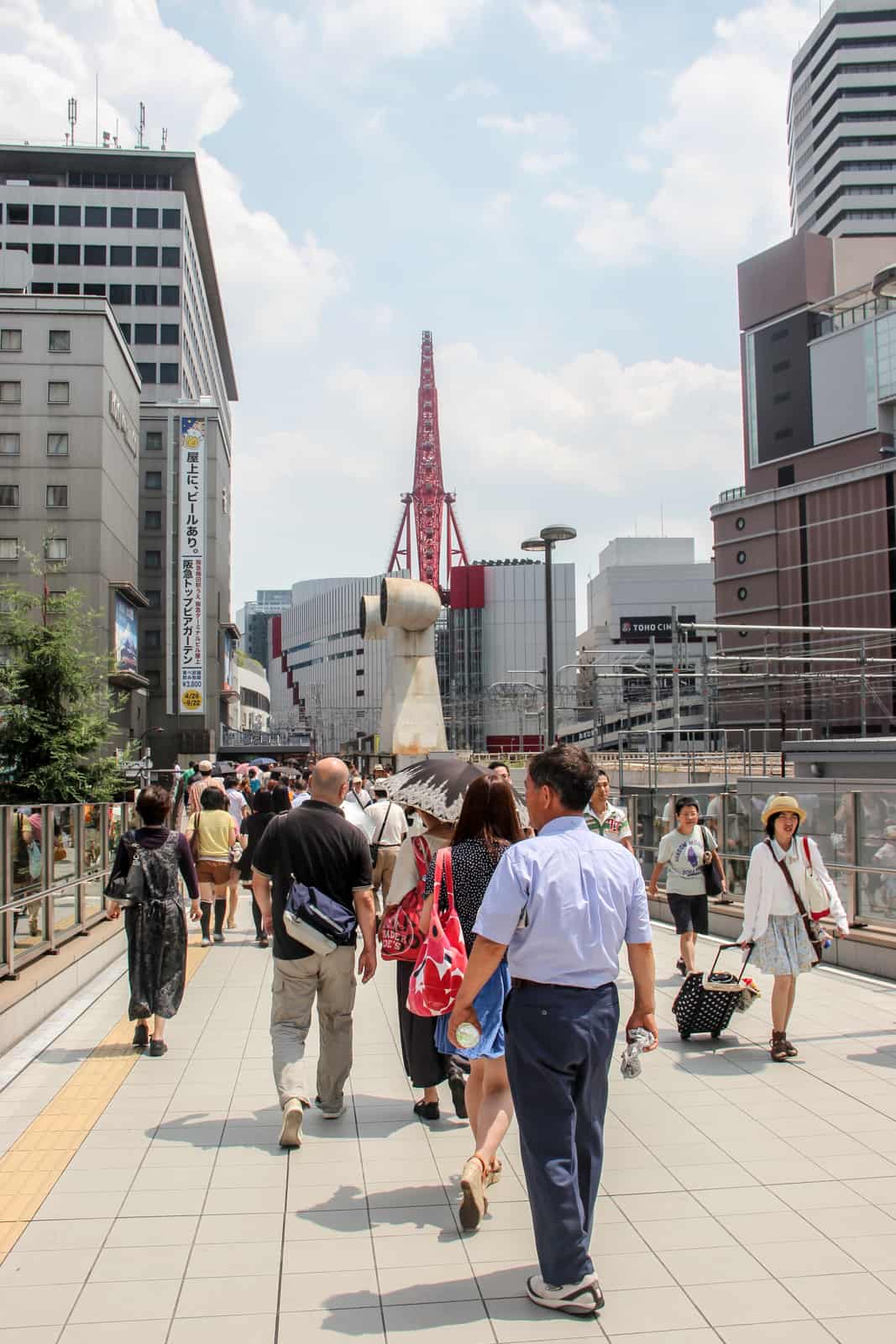
The red Ferris Wheel of Osaka.
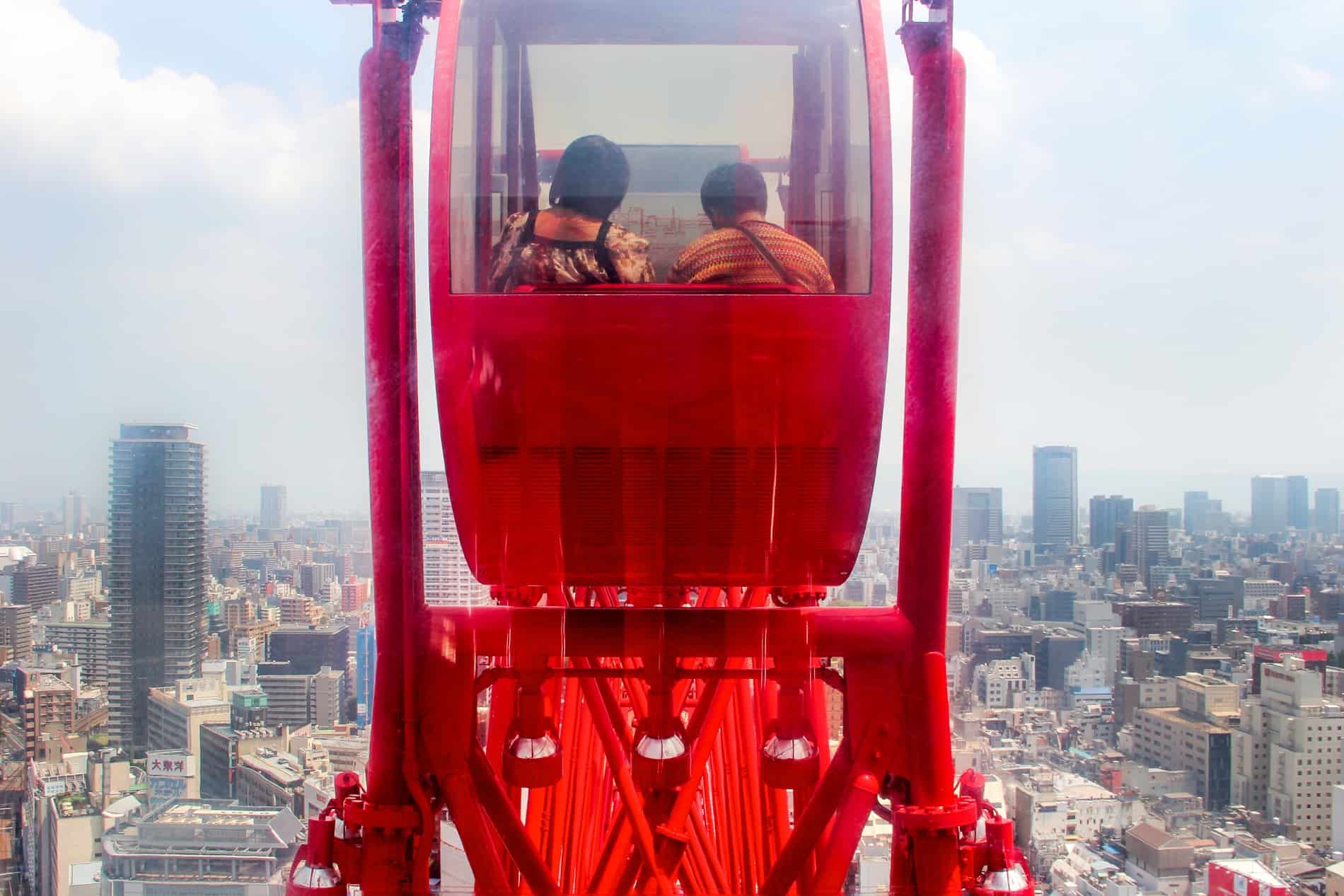
Riding the HEP FIVE Ferris Wheel with views over Osaka, Japan.
Osaka Walking Tours
I’m always an advocate for seeing a destination from a local perspective, with deeper insight, and Osaka is no exception. These walking tours help give some initial orientation, get you into corners of the city you might not know about and give you the chance to sample the very best Osaka foods.
Get to know the city and its main attractions on this four-hour walking tour of Osaka highlights and hidden spots that starts at Osaka Castle and ends in the neighbourhoods of Namba.
Create an itinerary with your local guide and craft a personalised private walking tour from two to eight hours based on your interests, and see Osaka differently.
From abandoned areas to controversial topics, this three-hour Deep Backstreets Exploration walking tour sheds light on a side of Osaka not often spoken about but which is important to the persona of the city.
Meander historical alleys full of food and drink hangouts, and join the local night culture on this Osaka Bar Hopping Night Tour. Or tour two neighbourhoods on the Dotonbori and Shinsekai food tour and try eight delicacies, including okonomiyaki, kushikatsu and takoyaki, in three hours. This dedicated Shinsekai food tour includes 10 dishes and two drinks.
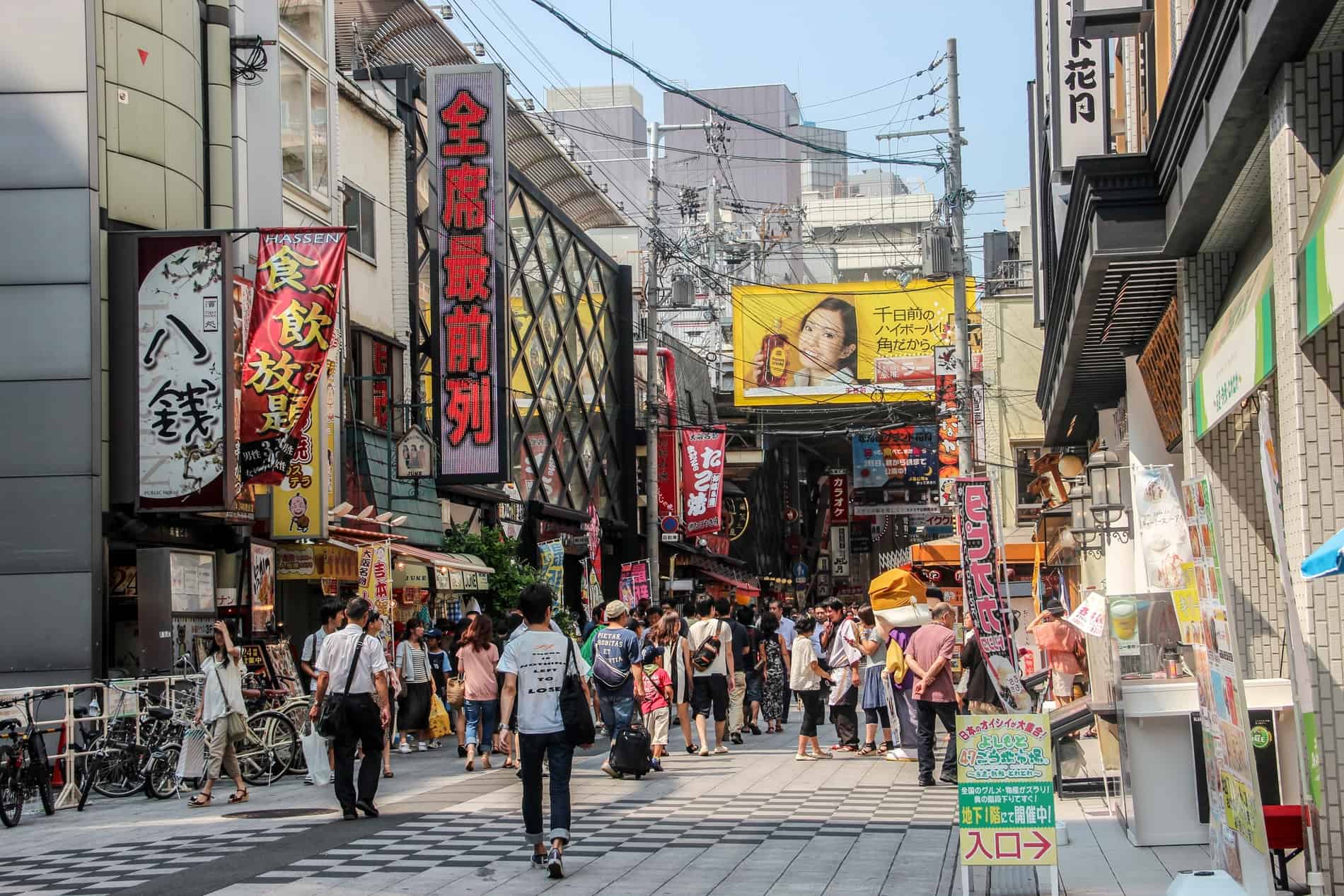
Osaka walking tours with locals are one way to get to know the city better.
Is Osaka Worth Visiting?
Without a doubt. Osaka may be another ‘big’ city to explore on the Japan travel circuit, but it’s different. It’s not the sleek capital of Tokyo to which it is often compared, nor the conservative and graceful Kyoto. Osaka is its own microculture that blurs the lines of Japan’s distinct contrast of modernism and manners.
Osaka is rebellious and proud of it, without losing its sense of history, and is gritty without being ugly. Don’t dismiss it as just another city – it’s far too bold to be ignored.
Travelling to Japan
READ ALL: On my Destination Page for Japan.
Want to Visit Osaka? Pin It!
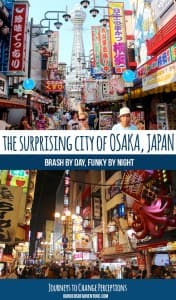
The post What to Do in Osaka, Japan – The Rebellious and Eccentric City appeared first on Borders Of Adventure.



